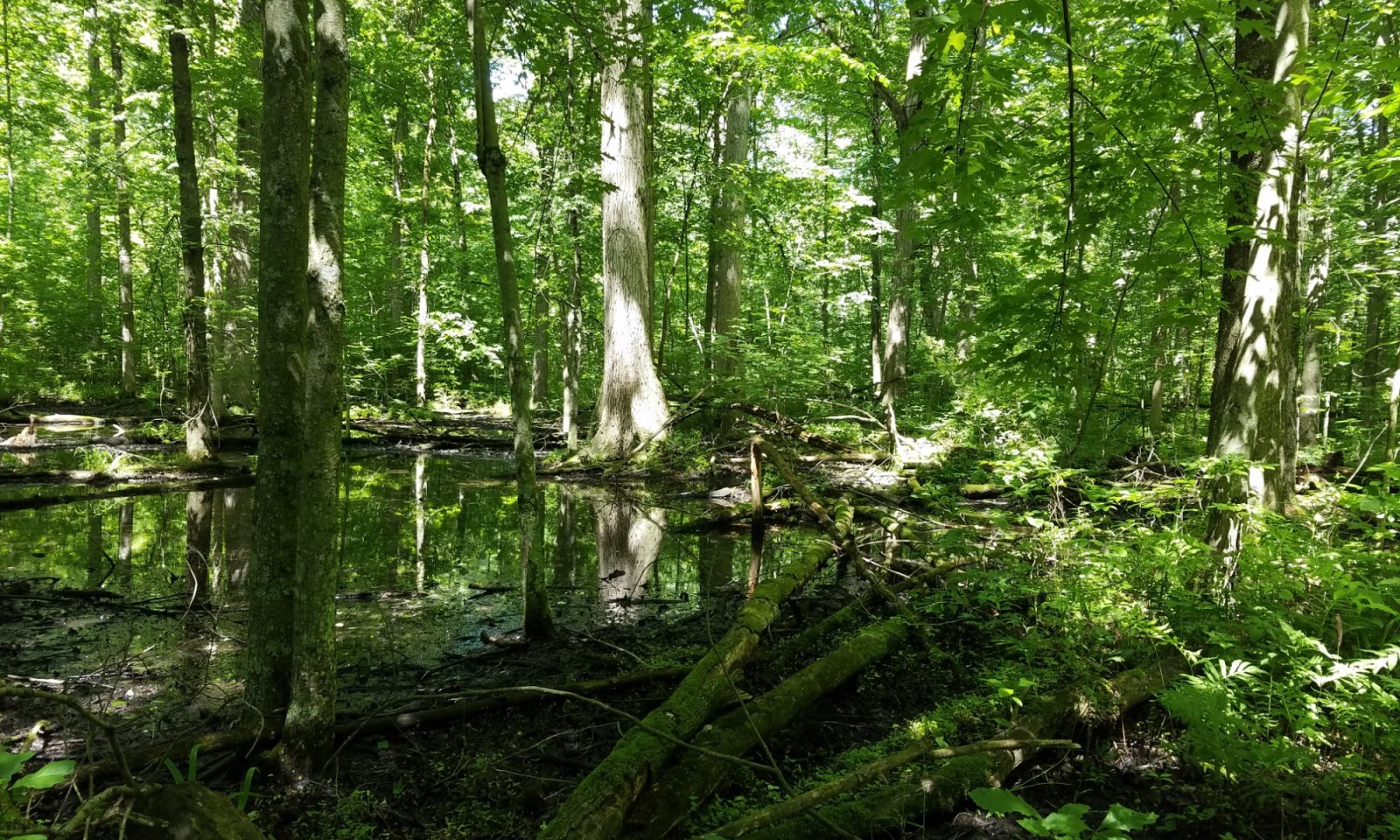

Natural Resources
Conservation Service
Ecological site F098XA012MI
Wet Loamy Depressions
Last updated: 1/11/2024
Accessed: 12/18/2025
General information
Approved. An approved ecological site description has undergone quality control and quality assurance review. It contains a working state and transition model, enough information to identify the ecological site, and full documentation for all ecosystem states contained in the state and transition model.
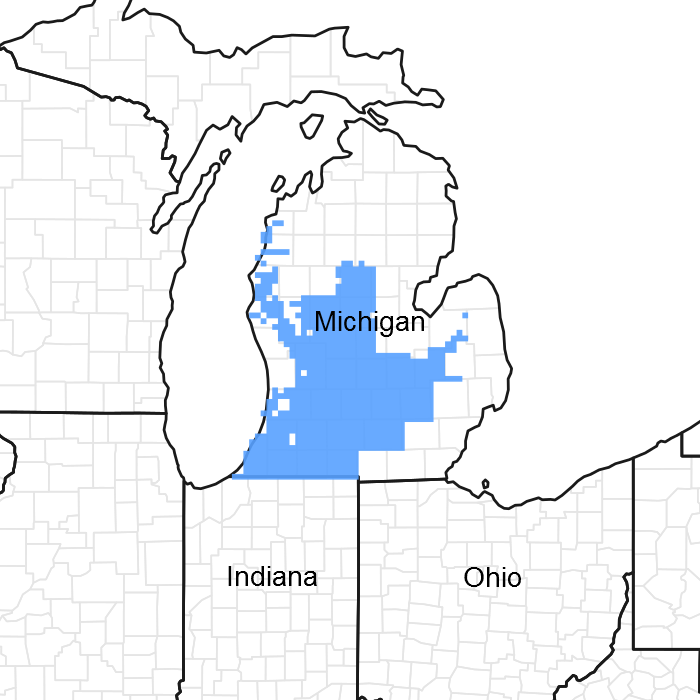
Figure 1. Mapped extent
Areas shown in blue indicate the maximum mapped extent of this ecological site. Other ecological sites likely occur within the highlighted areas. It is also possible for this ecological site to occur outside of highlighted areas if detailed soil survey has not been completed or recently updated.
MLRA notes
Major Land Resource Area (MLRA): 098X–Southern Michigan and Northern Indiana Drift Plains
This area is in the Eastern Lake Section of the Central Lowland Province of the Interior Plains. It is a broad glaciated plain that is deeply mantled by till in the north and outwash to the south. Much of the area is nearly level to gently rolling. Elevation ranges from 183 to 391 m (600 to 1285 ft). Local topographic relief averages 9 m and ranges up to 74 m (30 to 245 ft). Highest relief occurs adjacent to river valleys eroded through moraines. Topography is more subdued south of the Atlantic/Gulf drainage divide near the Michigan/Indiana state line, elevations ranging from 185 to 280 m (605 to 920 ft). Local topographic relief in the south averages 4 m and ranges up to 49 m (10 to 160 ft).
The surface of this area is covered by 30 to 150 m (100 to 500 ft) of glacial drift in most areas. At the northern edge of the area, the drift is more than 100 meters (300 ft) thick. From the Grand River basin northward, most of the drift consists of till from the Saginaw Lobe of the Wisconsin Ice Sheet. From the Kalamazoo River basin southward, there are significant deposits of unconsolidated sand and gravel outwash formed between major lobes of the receding Wisconsin Ice Sheet. The outwash deposits are reworked as sand dunes in the Kankakee River basin.
The bedrock beneath the glacial deposits in this area is deformed in the shape of a basin. The center of this basin is in the north-central part of the area. Pennsylvanian-age sandstone are in the center of the basin, and Mississippian-age sandstone and shale beds form the outer rings of the basin. In a few areas the drift deposits are less than 2 m (6 ft) thick, where glacial outwash channels have eroded to limestone bedrock in Grand Rapids, and where sandstone bedrock cuestas peak in elevation in near Hillsdale, Michigan. A sandstone cliff < 15 m high (<50 ft) occurs along a short stretch of the Grand River in Grand Ledge, Michigan.
Most of the rivers in this area are short because of their proximity to the Great Lakes east and west of the area. The largest watersheds, the St. Joseph River, Grand River, and Kalamazoo River drain into Lake Michigan. The southern extent of the MLRA is drained by the Kankakee River of the Mississippi River watershed.
Classification relationships
Among the USFS ecoregional framework (Cleland et al., 2007), most of MLRA 98 is represented by the Humid Temperate Domain (200), Hot Continental Division (220), Midwest Broadleaf Forest Province (222), South Central Great Lakes Section (222J), subsections 222Jc, 222Jg, 222Jh, and 222Jf. Similar sites within the portion of MLRA 98 that overlap the Prairie Division (250) and Prairie Parkland Province
(251) are treated as separate ecological sites. MLRA 98 recently was adjusted to exclude portions of Warm Continental Division (210), Laurentian Mixed Forest Province (212) to the north, and subsections 222Ja and 222Jb to the northwest.
Among the EPA ecoregional framework (Omernik and Griffith, 2014), most of MLRA 98 falls within Eastern Temperate Forests (Level I: 8), Mixed Wood Plains (Level II: 8.1), Southern Michigan/Northern Indiana Drift Plains (Level III: 56), and Level IV: 56b, 56g, and 56h. Similar sites within the portion of MLRA 98 that overlap the Central USA Plains (Level II: 8.2) and Central Corn Belt Plains (Level III: 54) are treated as separate ecological sites. MLRA 98 recently was adjusted to exclude portions of Northern Forests (Level I: 5), Mixed Wood Shield (Level II: 5.2), Northern Lakes and Forests (Level III: 50) to the north, and level IV: 56d and 56f to the northwest.
Ecological site concept
The central concept of the Wet Loamy Depressions is loamy to clayey till with a persistently high water table, often with a horizon of very low saturated hydraulic conductivity within 100 cm of the surface. Site is generally found in depressions and is poorly drained or very poorly drained. Due to very low saturated conductivity, some depressional locations are subject to ponding from local rainfall events, but with little groundwater input. Therefore vegetation is potentially similar to that of a floodplain forest in that it is subject to periodic inundation followed by periods of dryness.
Associated sites
| F098XA011MI |
Moist Loamy Drift Plains Moist Loamy Drift Plains are the non-hydric equivalent of Wet Loamy Depressions. Vegetation is mesophytic forest instead of swamps. |
|---|---|
| F098XA006MI |
Mucky Depressions Mucky Depressions can occur as wetter inclusions within or adjacent to Wet Loamy Depressions. |
Similar sites
| F098XA020MI |
Wet Sandy Drift Depressions Wet Sandy Drift Depressions are the sandy equivalent to Wet Loamy Depressions. Swamps and wet meadows tend to have a less dynamic hydrology due to greater soil porosity and influence from groundwater. |
|---|---|
| F097XA023MI |
Wet Loamy Depression Wet Loamy Depressions in MLRA 97 are essentially the same as that in MLRA 98, with perhaps, a slightly higher probability of pine or hemlock in its community composition, higher amounts of snowfall, and lower probability of fire. |
Table 1. Dominant plant species
| Tree |
(1) Acer saccharinum |
|---|---|
| Shrub |
Not specified |
| Herbaceous |
(1) Onoclea sensibilis |
Physiographic features
Site is most frequently found in depressions on till plains.
Table 2. Representative physiographic features
| Landforms |
(1)
Depression
(2) Till plain |
|---|---|
| Runoff class | Negligible to low |
| Ponding duration | Brief (2 to 7 days) to very long (more than 30 days) |
| Ponding frequency | Rare to frequent |
| Elevation | 604 – 1,276 ft |
| Water table depth | 10 in |
| Aspect | Aspect is not a significant factor |
Climatic features
This ecological site experiences a humid continental climate with mild summers and cold winters. Precipitation is moderately well distributed through the year with higher amounts during the growing season than the winter. Temperature extremes are moderated by the Great Lakes compared to other inland continental locations, though not as much as MLRAs directly bordering the Great Lakes. Mean annual extreme minimum temperatures range from -26.6 to -20.8°C (-16 to -5°F), which falls within hardiness zones 5a to 6a. Annual snowfall is enhanced by the Great Lakes, mainly on the western half of the MLRA.
Table 3. Representative climatic features
| Frost-free period (characteristic range) | 118-133 days |
|---|---|
| Freeze-free period (characteristic range) | 152-165 days |
| Precipitation total (characteristic range) | 32-39 in |
| Frost-free period (actual range) | 115-137 days |
| Freeze-free period (actual range) | 145-174 days |
| Precipitation total (actual range) | 32-41 in |
| Frost-free period (average) | 127 days |
| Freeze-free period (average) | 159 days |
| Precipitation total (average) | 36 in |
Figure 2. Monthly precipitation range
Figure 3. Monthly minimum temperature range
Figure 4. Monthly maximum temperature range
Figure 5. Monthly average minimum and maximum temperature
Figure 6. Annual precipitation pattern
Figure 7. Annual average temperature pattern
Climate stations used
-
(1) WANATAH 2 WNW [USC00129222], Valparaiso, IN
-
(2) ALMA [USC00200146], Alma, MI
-
(3) DOWAGIAC 1 W [USC00202250], Dowagiac, MI
-
(4) SAINT JOHNS [USC00207280], Saint Johns, MI
-
(5) THREE RIVERS [USC00208184], Three Rivers, MI
-
(6) BATTLE CREEK KELLOGG AP [USW00014815], Battle Creek, MI
-
(7) LAPORTE [USC00124837], La Porte, IN
-
(8) FLINT 7 W [USC00202851], Flushing, MI
-
(9) GREENVILLE 2 NNE [USC00203429], Greenville, MI
-
(10) GULL LK BIOLOGICAL STN [USC00203504], Augusta, MI
-
(11) HASTINGS [USC00203661], Hastings, MI
-
(12) FLINT BISHOP INTL AP [USW00014826], Flint, MI
-
(13) COLDWATER ST SCHOOL [USC00201675], Coldwater, MI
-
(14) EAST LANSING 4 S [USC00202395], Holt, MI
-
(15) HILLSDALE [USC00203823], Hillsdale, MI
-
(16) JACKSON REYNOLDS FLD [USW00014833], Jackson, MI
-
(17) GRAND RAPIDS [USW00094860], Grand Rapids, MI
-
(18) PRAIRIE HEIGHTS [USC00127102], LaGrange, IN
-
(19) HOWELL WWTP [USC00203947], Howell, MI
-
(20) IONIA 2SSW [USC00204078], Ionia, MI
-
(21) OWOSSO WWTP [USC00206300], Owosso, MI
-
(22) LANSING CAPITAL CITY AP [USW00014836], Lansing, MI
Influencing water features
Seasonal perched water table is within 0 - 25 cm with seasonal ponding.
Soil features
Soils are poorly drained to very poorly drained loams. They are commonly classified as Typic Argiaquolls, Mollic Epiaquepts, and Typic Endoaquolls, and commonly mapped as Parkhill, Brookston, and Colwood series.
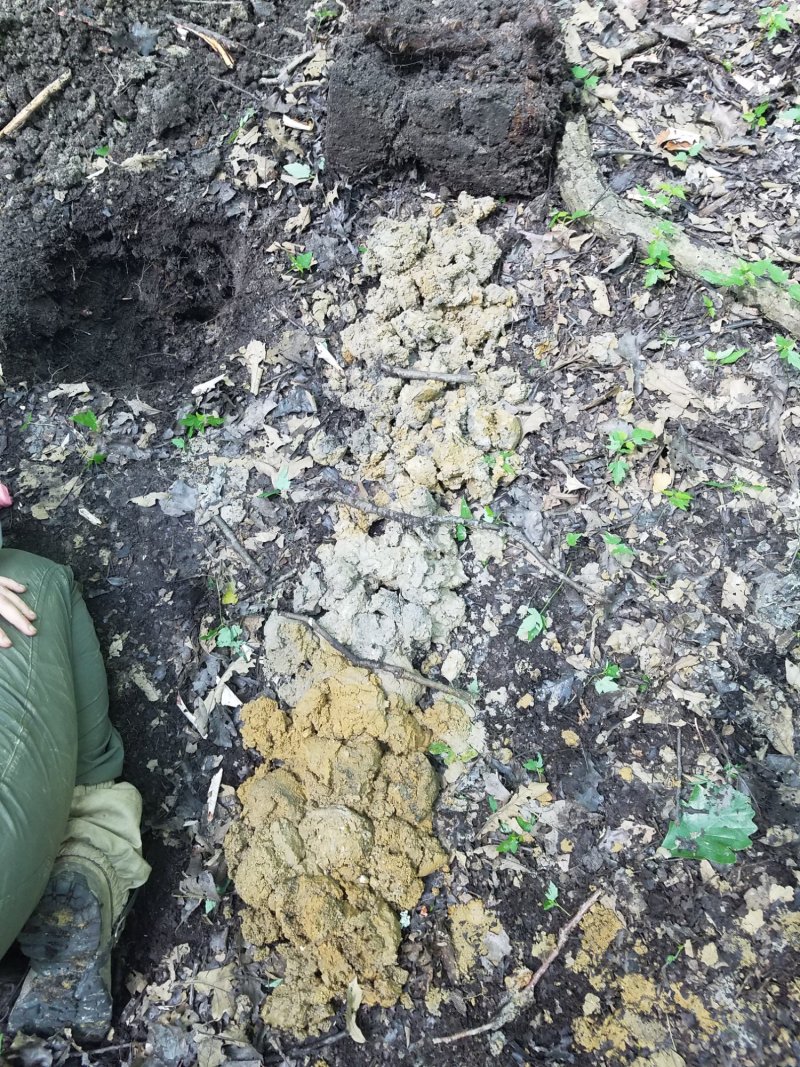
Figure 8. Soil samples from the reference state.
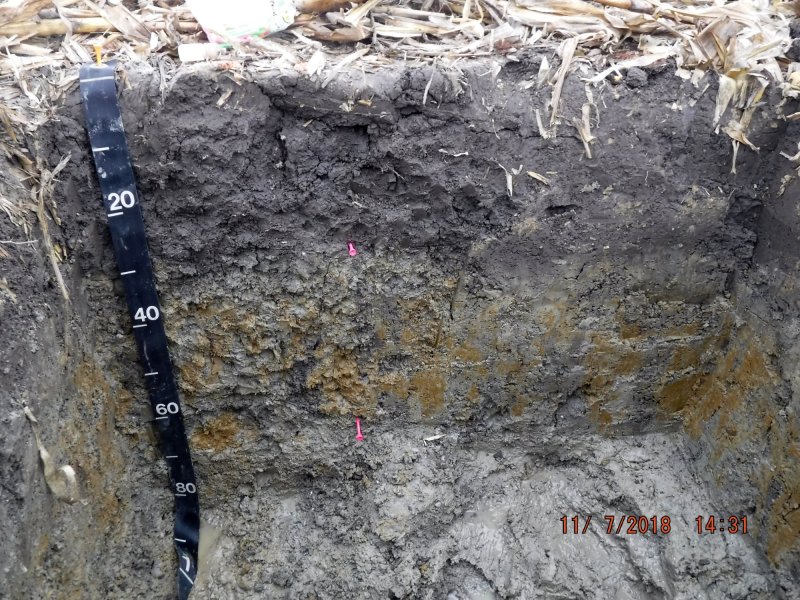
Figure 9. Soil profile of the cropped state.
Table 4. Representative soil features
| Parent material |
(1)
Till
|
|---|---|
| Surface texture |
(1) Loam |
| Drainage class | Poorly drained to very poorly drained |
| Permeability class | Slow to moderately rapid |
| Soil depth | 79 in |
| Surface fragment cover <=3" | 5% |
| Surface fragment cover >3" | 1% |
| Available water capacity (0-39.4in) |
5.12 – 8.66 in |
| Soil reaction (1:1 water) (0-19.7in) |
5.5 – 7 |
| Subsurface fragment volume <=3" (0-59.1in) |
35% |
| Subsurface fragment volume >3" (0-59.1in) |
15% |
Ecological dynamics
The reference community of Wet Loamy Depressions is swamp forest dominated by Acer saccharinum (silver maple), Fraxinus pennsylvanica (green ash), Ulmus americana (American elm), Quercus bicolor (swamp white oak), and Populus deltoides (eastern cottonwood), with an understory of Onoclea sensibilis (sensitive fern), Carex grayi (Gray's sedge), Glyceria striata (fowl mannagrass), and Boehmeria cylindrica (smallspike false nettle). The high fertility and seasonal ponding of this mineral soil site results in a species composition similar to that of floodplains. Wet anoxic soils favor facultative and obligate wetland species.
Hydrology affects the spatial zonation while changes in precipitation patterns and beaver flooding affects community dynamics. Windthrow is a frequent disturbance due to shallow rooting of tree in wet soils, but usually consists of single tree gaps, favoring the already established young, mainly intermediate to shade tolerant species to fill the gaps. Fire occurs infrequently in swamp forest where fuels are typically discontinuous, and adjacent uplands are mesophytic forest. In some landscape settings adjacent to oak savanna, fires may carry into a wet meadow community phase. The degree of permeability of deeper soil layers affects the degree to which the hydrology is dominated by a steady water table or more subjected to short term droughts and surface runoff events.
The speed of succession in wet meadows and shrub thickets is slowed by wet hydrology. But because these sites are only seasonally wet, most instances of open communities in this ecological site will quickly succeed to swamp forest.
Sedge dominated wet meadow may dominate the site for the first 10 years after a tree and shrub mortality event such as from fire (every 1000 years) or ponding (every 300 years). Shrub thickets may dominate the site for up to 30 years before conversion to forest. Trees establishing under shrubs surpass the shrubs at 3-5 m tall. At 30-80 years, the canopy will exceed 10 m. In absence of disturbance the forest at 80-400 years may exceed 30 m tall. As a tree approaches the maximum height of the forest, it is at constant risk of being toppled by windthrow, especially with shallower rooting depths in hydric mineral soils (this effect is even worse for structurally weak organic soils). Shade intolerant and fast-growing species like Populus deltoides and Salix nigra may persist to 100 years, but earlier canopy emergence, lower density wood (increased wood-rot) all conspire to more quickly thin these species without replacement, due to shade. Longer lived trees may persist but will also tend to replace themselves with understory recruitment (advanced regeneration), having seedlings and saplings able to tolerate moderate amounts of shade. Upland species (e.g. species from adjacent upland forests: Acer saccharum, Tilia americana, Quercus rubra, Quercus macrocarpa, and Fagus grandifolia) may also be present on tip-up mounds, where roots are elevated above the water table. Transitional to wet sandy depressions and mucky depressions in more permeable substrates and less dynamic water tables, the overstory composition shifts towards species less tolerant of long period inundation such as Acer rubrum and Fraxinus nigrum.
For most of the flora there is a tradeoff between shade tolerance and flood tolerance. Consequently, some of the species most tolerant of wetness are among the least shade tolerant. The hydric species Acer saccharinum, Fraxinus pennsylvanica, Ulmus americana, and Quercus bicolor are all intermediate in shade tolerance, but are the most tolerant among the hydric species (especially Acer saccharinum). Populus deltoides and most Salix spp. Cephalanthus occidentalis and Alnus rugosa are very shade intolerant. Acer saccharinum, Populus deltoides, Salix nigra, and Cephalanthus occidentalis can persist long periods in standing water. The understory of a ponded swamp forest tends to be sparse, whereas less inundated areas may have thick understory intermediately shade tolerant Lindera benzoin, Ilex verticillata, Zanthoxylum americanum, Sambucus canadensis, and Sambucus racemosa, species which may also occur in open shrub thickets. Open shrub thickets have a variable composition of shade intolerant shrubs: Cornus obliqua, Cornus racemosa, Cornus sericea, Salix interior, Salix petiolaris, Salix eriocephala, Salix sericea.
The seeds of swamp species often lack dormancy because they must be able to germinate mid-growing season while water tables are low, and not be washed away during the winter. Because the sites tend to maintain surface moisture throughout the growing season, seedlings of many genera (Acer, Fraxinus, Ulmus, and Populus) do not need the extra provisions for quickly establishing deep taproots, enabling a strategy of small, prolific winged fruits or seeds capable dispersing longer distances to smaller wetland patches. Nevertheless, the site supports the coexistence of the large-seeded genera (e.g. Quercus and Carya), as reproductive tradeoffs are not absolute.
Invasive plants like Frangula alnus, Alliaria petiolata, Berberis thunbergii, and Rosa multiflora have greatly affected the dominant species composition. More than a few percentages of these species render the stand semi-natural. The introduction of Dutch elm disease and emerald ash borer have substantially reduced the importance of Ulmus americana and Fraxinus pennsylvanica. It is common to find snags associated with dead Ulmus and Fraxinus, as well has extensive down woody debris in stands where dominance of Fraxinus was more recent. Ulmus has been able to sexually reproduce and maintain itself decades after the initial disease introduction. The current flux of Fraxinus seedlings and saplings is apparently remnant reproduction from trees that managed to reach maturity prior to arrival of the invasive borer.
State and transition model
More interactive model formats are also available.
View Interactive Models
Click on state and transition labels to scroll to the respective text
Ecosystem states
State 1 submodel, plant communities
Communities 2 and 5 (additional pathways)
State 2 submodel, plant communities
State 3 submodel, plant communities
State 4 submodel, plant communities
State 1
Reference State
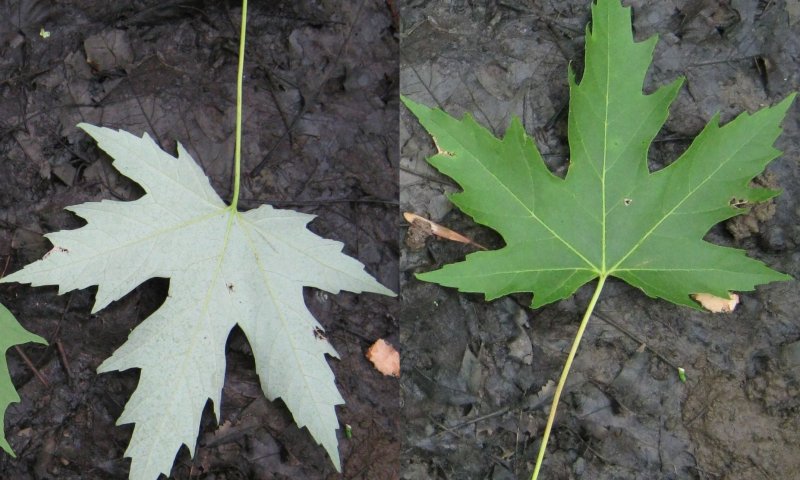
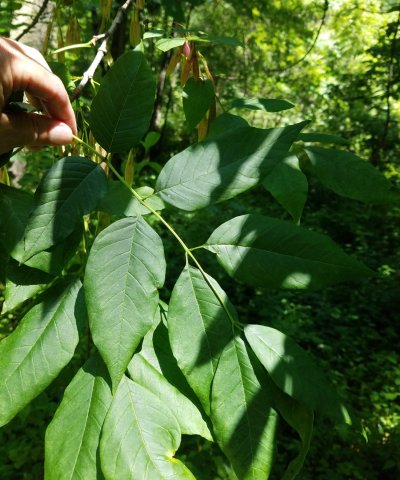
The Reference State consists of a mosaic of swamp forest, shrub swamp, wet meadows, and marshes determined with a structure and composition determined mainly by ecological processes primarily with minimal influence from human activity. Intentional influence from human activity often serves to mimic natural processes or to restore missing species.
Dominant plant species
-
silver maple (Acer saccharinum), tree
-
green ash (Fraxinus pennsylvanica), tree
-
sensitive fern (Onoclea sensibilis), other herbaceous
Community 1.1
Swamp Forest

Dominant plant species
-
silver maple (Acer saccharinum), tree
-
American elm (Ulmus americana), tree
-
green ash (Fraxinus pennsylvanica), tree
-
common pricklyash (Zanthoxylum americanum), shrub
-
Gray's sedge (Carex grayi), grass
-
fowl mannagrass (Glyceria striata), grass
-
whitegrass (Leersia virginica), grass
-
American hogpeanut (Amphicarpaea bracteata), other herbaceous
-
smallspike false nettle (Boehmeria cylindrica), other herbaceous
-
Canadian clearweed (Pilea pumila), other herbaceous
-
jumpseed (Polygonum virginianum), other herbaceous
Table 5. Soil surface cover
| Tree basal cover | 0% |
|---|---|
| Shrub/vine/liana basal cover | 0% |
| Grass/grasslike basal cover | 0% |
| Forb basal cover | 12% |
| Non-vascular plants | 0% |
| Biological crusts | 0% |
| Litter | 63% |
| Surface fragments >0.25" and <=3" | 0% |
| Surface fragments >3" | 0% |
| Bedrock | 0% |
| Water | 0% |
| Bare ground | 0% |
Table 6. Woody ground cover
| Downed wood, fine-small (<0.40" diameter; 1-hour fuels) | 0-5% |
|---|---|
| Downed wood, fine-medium (0.40-0.99" diameter; 10-hour fuels) | 0-5% |
| Downed wood, fine-large (1.00-2.99" diameter; 100-hour fuels) | 0-5% |
| Downed wood, coarse-small (3.00-8.99" diameter; 1,000-hour fuels) | 0-8% |
| Downed wood, coarse-large (>9.00" diameter; 10,000-hour fuels) | 0-7% |
| Tree snags** (hard***) | – |
| Tree snags** (soft***) | – |
| Tree snag count** (hard***) | |
| Tree snag count** (hard***) | 0-23 per acre |
* Decomposition Classes: N - no or little integration with the soil surface; I - partial to nearly full integration with the soil surface.
** >10.16cm diameter at 1.3716m above ground and >1.8288m height--if less diameter OR height use applicable down wood type; for pinyon and juniper, use 0.3048m above ground.
*** Hard - tree is dead with most or all of bark intact; Soft - most of bark has sloughed off.
Table 7. Canopy structure (% cover)
| Height Above Ground (ft) | Tree | Shrub/Vine | Grass/ Grasslike |
Forb |
|---|---|---|---|---|
| <0.5 | – | 0-5% | 0-15% | 1-14% |
| >0.5 <= 1 | – | 0-5% | 2-60% | 1-25% |
| >1 <= 2 | – | 1-13% | 2-60% | 1-14% |
| >2 <= 4.5 | 0-5% | 1-10% | 1-50% | 1-30% |
| >4.5 <= 13 | 0-12% | 1-10% | – | – |
| >13 <= 40 | 55-95% | 0% | – | – |
| >40 <= 80 | 55-90% | – | – | – |
| >80 <= 120 | 9-15% | – | – | – |
| >120 | – | – | – | – |
Community 1.2
Wet Meadow
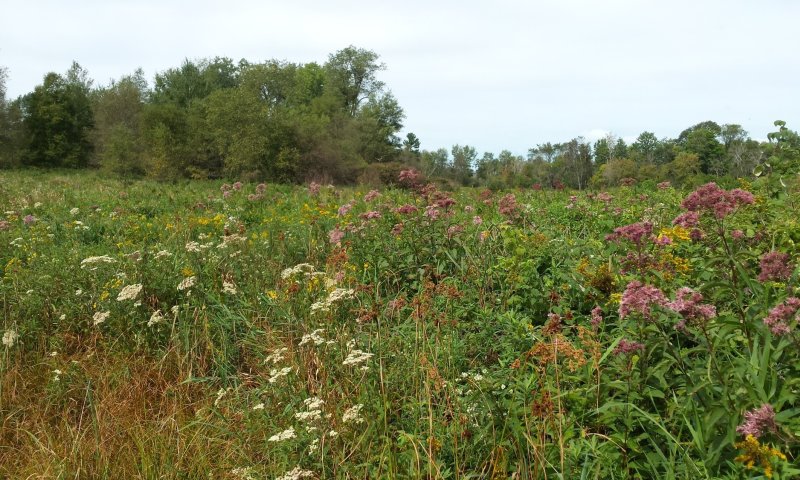
Species list incomplete, and likely not representing the range of variability of this community. Most expressions of this community occur in sandy or mucky sites outside the range of this ecological site.
Dominant plant species
-
longhair sedge (Carex comosa), grass
-
common boneset (Eupatorium perfoliatum), other herbaceous
Table 8. Canopy structure (% cover)
| Height Above Ground (ft) | Tree | Shrub/Vine | Grass/ Grasslike |
Forb |
|---|---|---|---|---|
| <0.5 | – | 0-1% | 5-10% | 15-30% |
| >0.5 <= 1 | – | 0-1% | 5-10% | 15-30% |
| >1 <= 2 | – | 0-25% | 5-10% | 15-30% |
| >2 <= 4.5 | 0-1% | 0-25% | 15-30% | 60-65% |
| >4.5 <= 13 | 0-1% | 0-20% | – | – |
| >13 <= 40 | – | – | – | – |
| >40 <= 80 | – | – | – | – |
| >80 <= 120 | – | – | – | – |
| >120 | – | – | – | – |
Community 1.3
Shrub-Thicket
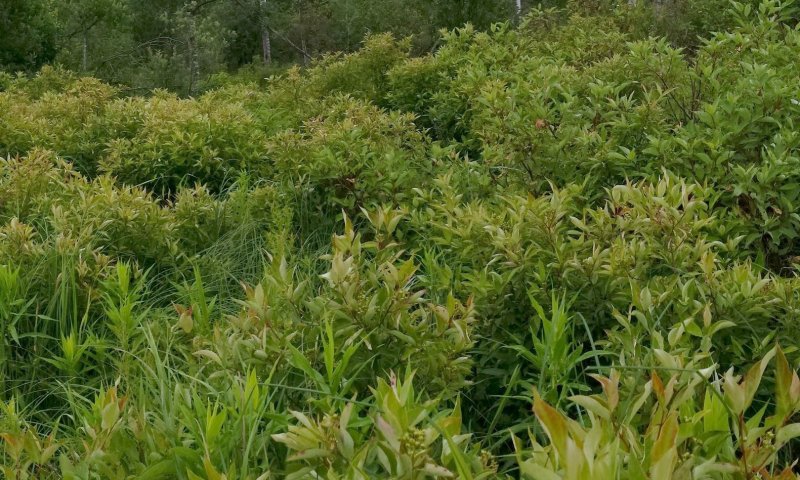
Dominant plant species
-
redosier dogwood (Cornus sericea), shrub
-
silky dogwood (Cornus obliqua), shrub
-
gray dogwood (Cornus racemosa), shrub
-
sandbar willow (Salix interior), shrub
-
meadow willow (Salix petiolaris), shrub
-
Missouri River willow (Salix eriocephala), shrub
-
red elderberry (Sambucus racemosa), shrub
Community 1.5
Inundated Shrub Swamp
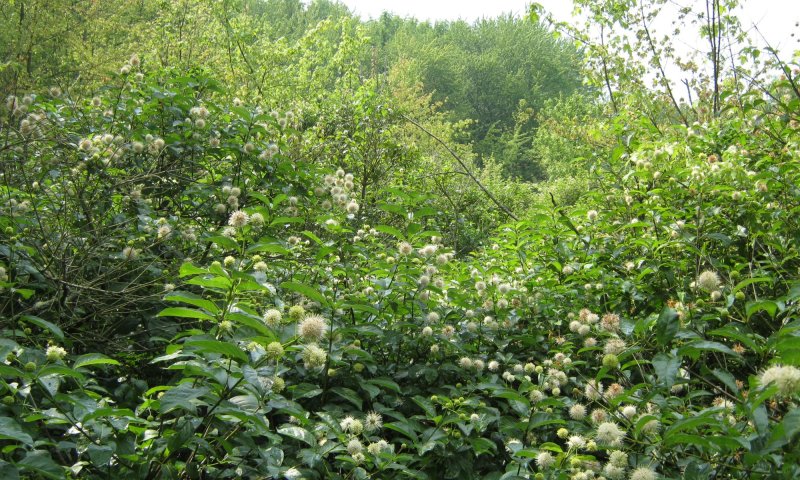
Dominant plant species
-
common buttonbush (Cephalanthus occidentalis), shrub
Table 9. Canopy structure (% cover)
| Height Above Ground (ft) | Tree | Shrub/Vine | Grass/ Grasslike |
Forb |
|---|---|---|---|---|
| <0.5 | – | – | – | – |
| >0.5 <= 1 | – | – | – | – |
| >1 <= 2 | – | 10-95% | 0-2% | – |
| >2 <= 4.5 | – | 0-95% | 0-2% | – |
| >4.5 <= 13 | – | 0-95% | – | – |
| >13 <= 40 | – | – | – | – |
| >40 <= 80 | – | – | – | – |
| >80 <= 120 | – | – | – | – |
| >120 | – | – | – | – |
Pathway 1.1A
Community 1.1 to 1.2


Temporary prolonged inundation.
Pathway 1.1B
Community 1.1 to 1.3


Clearcut/Blowdown.
Conservation practices
| Early Successional Habitat Development/Management | |
|---|---|
| Forest Stand Improvement |
Pathway 1.2A
Community 1.2 to 1.1


Succession.
Conservation practices
| Tree/Shrub Site Preparation | |
|---|---|
| Tree/Shrub Establishment |
Pathway 1.2B
Community 1.2 to 1.3


Succession.
Conservation practices
| Tree/Shrub Site Preparation | |
|---|---|
| Tree/Shrub Establishment |
Pathway 1.2D
Community 1.2 to 1.4

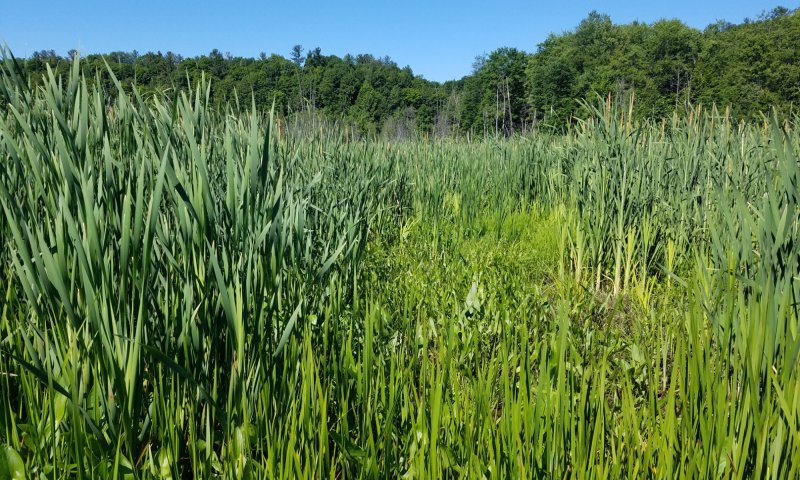
Permanent inundation.
Pathway 1.2E
Community 1.2 to 1.5


Shrub establishment; permanent inundation.
Conservation practices
| Tree/Shrub Establishment |
|---|
Pathway 1.3A
Community 1.3 to 1.1


Succession.
Conservation practices
| Tree/Shrub Site Preparation | |
|---|---|
| Tree/Shrub Establishment |
Pathway 1.3B
Community 1.3 to 1.2


Temporary prolonged inundation.
Pathway 1.3C
Community 1.3 to 1.4


Permanent inundation.
Pathway 1.3C
Community 1.3 to 1.5


Permanent inundation.
Pathway 1.4A
Community 1.4 to 1.2


Drop water table.
Pathway 1.4C
Community 1.4 to 1.5


Temporary drop water table; shrub establishment.
Pathway 1.5A
Community 1.5 to 1.2


Drop water table; shrub mortality.
Conservation practices
| Brush Management |
|---|
Pathway 1.5C
Community 1.5 to 1.4


Temporary drought; shrub mortality.
State 2
Cultural State
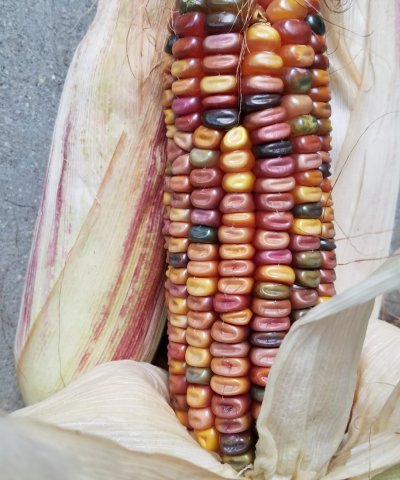
The cultural state includes any land use in which the species composition and vegetation structure is determined intentionally by regular human activity, including cropland and urbanland. It is managed to obtain specific products for the benefit of human society with efforts to exclude competition and herbivory connecting it to the rest of the ecosystem.
Community 2.1
Sustainable Crop, Pasture, or Plantation
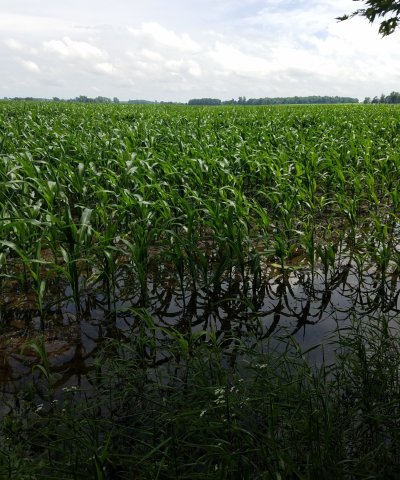
In the majority of cases, this community phase is managed with annual row crops alternating between Zea mays and Glycine max. Attempts are made to reduce soil erosion by chemical methods that reduce the need to till the soil for weed control, and cover crops between harvested crops. Ideally there would be reduced need for fertilizer, allow for more infiltration of rainwater, and less runoff of nutrients into water bodies.
Dominant plant species
-
corn (Zea mays), grass
-
soybean (Glycine max), other herbaceous
Community 2.2
Unsustainable Cultural Phase
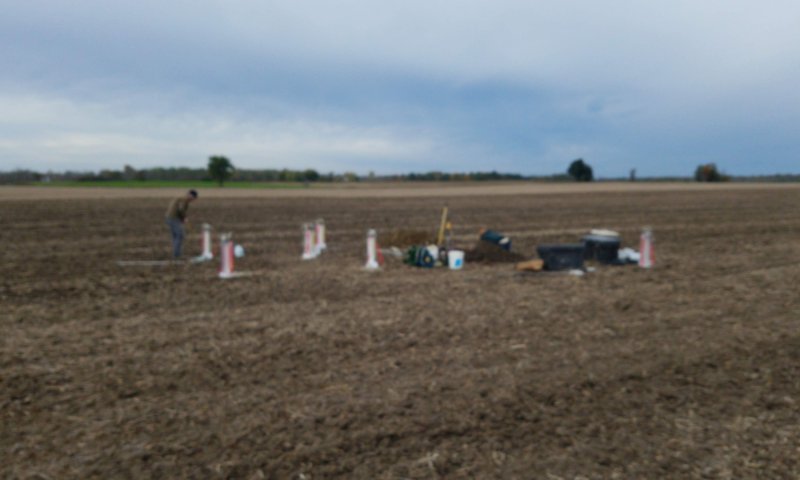
In the majority of cases, this community phase is managed with annual row crops alternating between Zea mays and Glycine max. Conventional tilling is used to control weed competition. Much excess fertilizer is used to maximize production. After harvest, the ground is left bare and subject to erosion. The net effect is excess runoff with excess nitrogen and phosphorus accumulating in water bodies causing algal blooms.
Dominant plant species
-
corn (Zea mays), grass
-
soybean (Glycine max), other herbaceous
Community 2.3
Conservation Feature
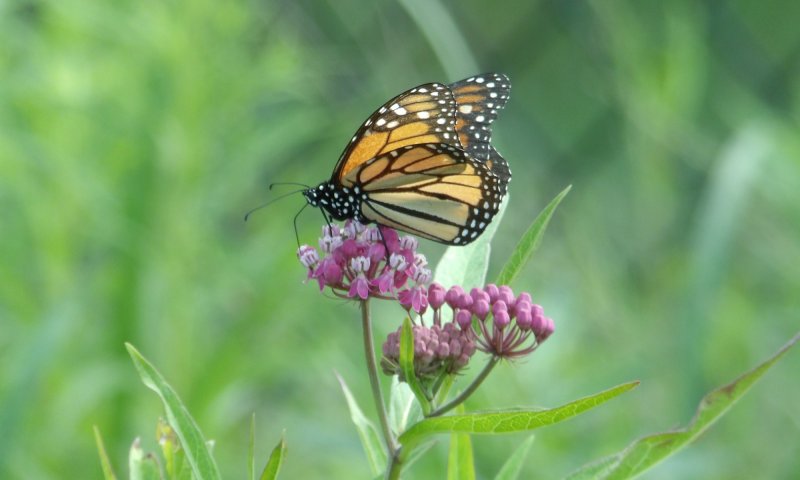
Can be a grassed waterway, conservation reserve, a small patch pollinator garden, or other land taken out of its primary cultural production to mitigate or reduce impacts of adjacent land use, and is not by itself a permanent restoration of a complete native biological community and associated ecosystem services.
Pathway 2.1A
Community 2.1 to 2.2


Revert to unsustainable cultural practices.
Pathway 2.1B
Community 2.1 to 2.3


Establish conservation feature.
Conservation practices
| Conservation Cover | |
|---|---|
| Grassed Waterway |
Pathway 2.2A
Community 2.2 to 2.1


Implement sustainable cultural practices.
Conservation practices
| Conservation Crop Rotation | |
|---|---|
| Cover Crop | |
| Nutrient Management | |
| Integrated Pest Management (IPM) |
Pathway 2.2B
Community 2.2 to 2.3


Establish conservation feature.
Conservation practices
| Conservation Cover | |
|---|---|
| Grassed Waterway |
Pathway 2.3A
Community 2.3 to 2.1


Implement sustainable cultural practices.
Conservation practices
| Conservation Crop Rotation | |
|---|---|
| Cover Crop | |
| Nutrient Management | |
| Integrated Pest Management (IPM) |
Pathway 2.3B
Community 2.3 to 2.2


Revert to unsustainable cultural practices.
State 3
Seminatural Drained State
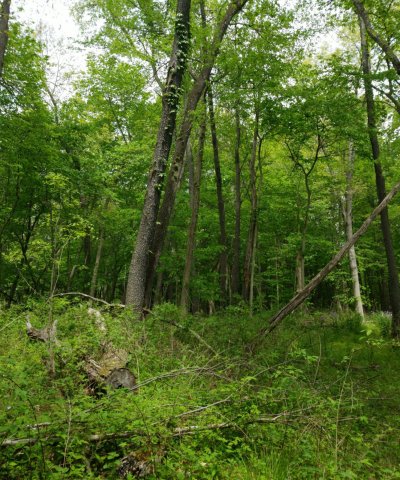
Semi-natural drained vegetation has a structure and composition determined by ecological processes significantly influenced by human activity. Draining the site allows for more non-hydric species to colonize the site. Previous disturbance and introduction of invasive species will also affect composition.
Community 3.1
Ruderal Drained Meadow & Shrub
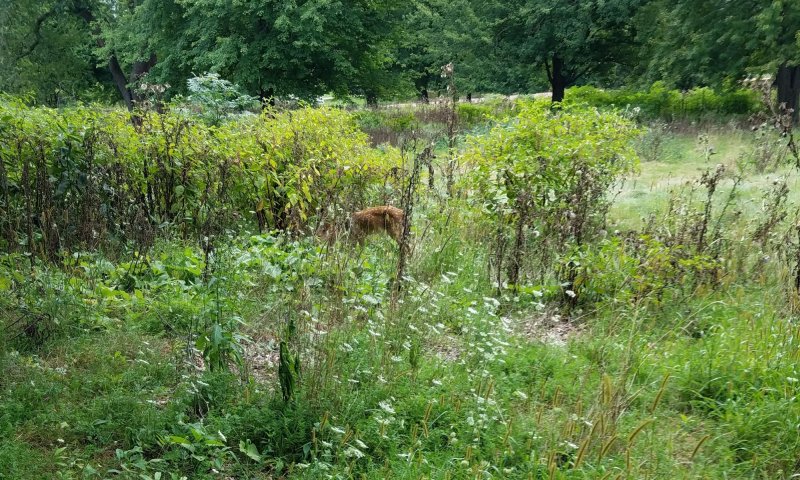
Plot data not representing the full range of variability of this community type.
Dominant plant species
-
timothy (Phleum pratense), grass
-
fowl bluegrass (Poa palustris), grass
-
quackgrass (Elymus repens), grass
-
Queen Anne's lace (Daucus carota), other herbaceous
-
annual ragweed (Ambrosia artemisiifolia), other herbaceous
Table 10. Canopy structure (% cover)
| Height Above Ground (ft) | Tree | Shrub/Vine | Grass/ Grasslike |
Forb |
|---|---|---|---|---|
| <0.5 | – | – | – | – |
| >0.5 <= 1 | – | – | – | – |
| >1 <= 2 | – | – | – | 0-1% |
| >2 <= 4.5 | 0-4% | – | 30-95% | 14-55% |
| >4.5 <= 13 | 0-4% | – | – | – |
| >13 <= 40 | – | – | – | – |
| >40 <= 80 | – | – | – | – |
| >80 <= 120 | – | – | – | – |
| >120 | – | – | – | – |
Community 3.2
Exotic Ruderal Drained Forest
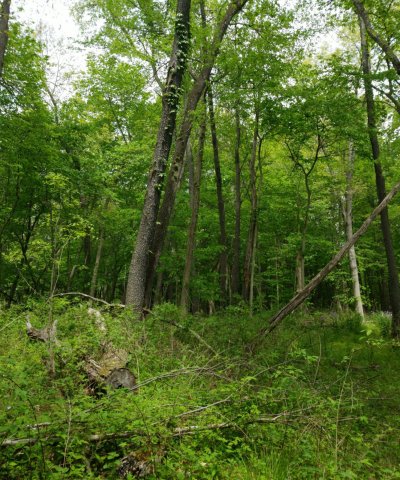
Dominant plant species
-
sugar maple (Acer saccharum), tree
-
red maple (Acer rubrum), tree
-
American beech (Fagus grandifolia), tree
-
American basswood (Tilia americana), tree
-
Virginia creeper (Parthenocissus quinquefolia), shrub
-
eastern poison ivy (Toxicodendron radicans), shrub
-
jumpseed (Polygonum virginianum), other herbaceous
Table 11. Canopy structure (% cover)
| Height Above Ground (ft) | Tree | Shrub/Vine | Grass/ Grasslike |
Forb |
|---|---|---|---|---|
| <0.5 | – | – | 2-2% | 2-12% |
| >0.5 <= 1 | – | – | 2-2% | 2-15% |
| >1 <= 2 | – | 0-2% | 2-3% | 2-15% |
| >2 <= 4.5 | 0-4% | 0-6% | 0-1% | 1-9% |
| >4.5 <= 13 | 0-20% | 0-6% | – | – |
| >13 <= 40 | 75-95% | 0% | – | – |
| >40 <= 80 | 65-85% | 0% | – | – |
| >80 <= 120 | 25-30% | – | – | – |
| >120 | – | – | – | – |
Pathway 3.1A
Community 3.1 to 3.2


Succession
Pathway 3.2A
Community 3.2 to 3.1


Blowdown/clearcut.
Conservation practices
| Early Successional Habitat Development/Management | |
|---|---|
| Forest Stand Improvement |
State 4
Seminatural State
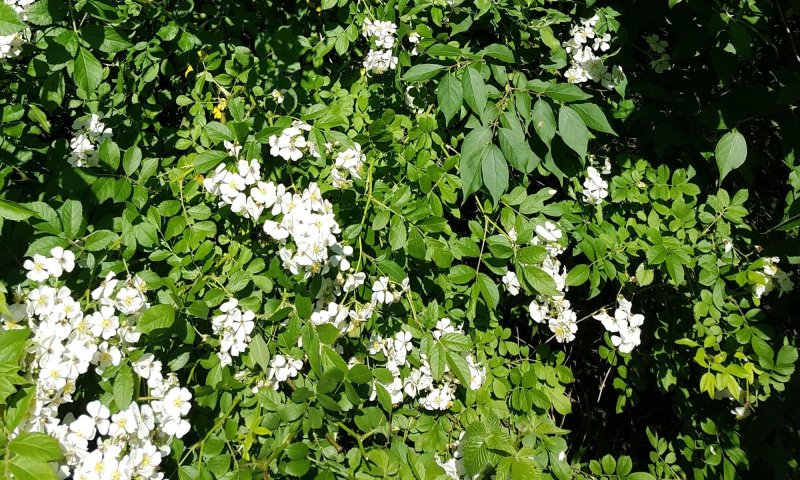
Semi-natural vegetation has a structure and composition determined by ecological processes significantly influenced by human activity such as prior soil disturbances, harvesting, and introduction of invasive species.
Community 4.1
Ruderal Wet Meadow & Shrub Swamp
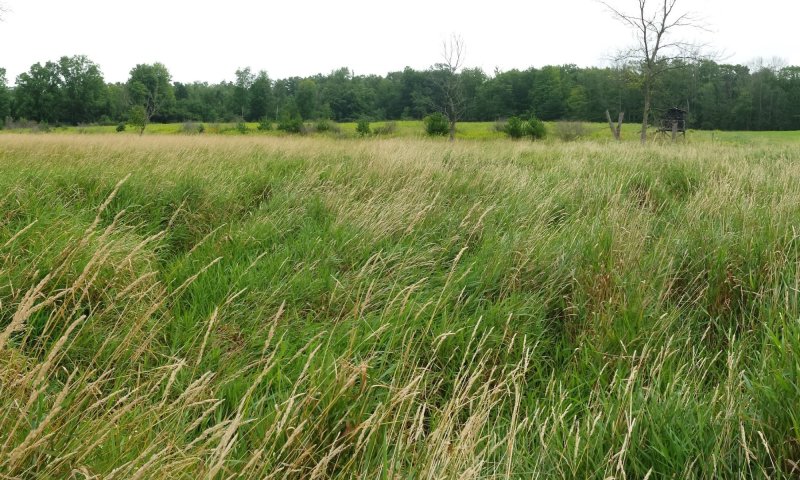
Dominant plant species
-
reed canarygrass (Phalaris arundinacea), grass
Table 12. Canopy structure (% cover)
| Height Above Ground (ft) | Tree | Shrub/Vine | Grass/ Grasslike |
Forb |
|---|---|---|---|---|
| <0.5 | – | 0-1% | – | 0% |
| >0.5 <= 1 | – | 0-1% | – | 0% |
| >1 <= 2 | – | 4-40% | 7-11% | 2-50% |
| >2 <= 4.5 | 2-8% | 4-40% | 65-100% | 3-65% |
| >4.5 <= 13 | 1-3% | 4-40% | 0% | 0-1% |
| >13 <= 40 | 0-2% | – | – | – |
| >40 <= 80 | – | – | – | – |
| >80 <= 120 | – | – | – | – |
| >120 | – | – | – | – |
Community 4.2
Exotic Ruderal Swamp Forest
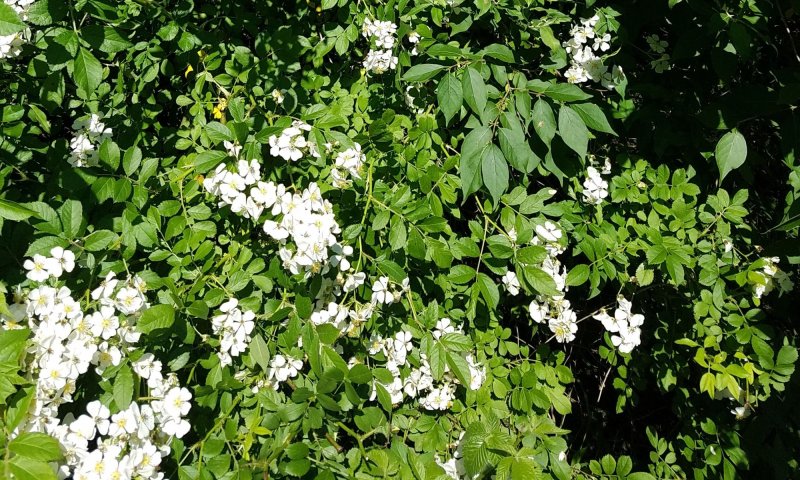
Dominant plant species
-
silver maple (Acer saccharinum), tree
-
eastern cottonwood (Populus deltoides), tree
-
green ash (Fraxinus pennsylvanica), tree
-
American elm (Ulmus americana), tree
-
multiflora rose (Rosa multiflora), shrub
-
eastern poison ivy (Toxicodendron radicans), shrub
Table 13. Canopy structure (% cover)
| Height Above Ground (ft) | Tree | Shrub/Vine | Grass/ Grasslike |
Forb |
|---|---|---|---|---|
| <0.5 | – | – | 5-15% | 0-2% |
| >0.5 <= 1 | – | – | 5-15% | 0-2% |
| >1 <= 2 | – | 6-35% | 7-20% | – |
| >2 <= 4.5 | 1-20% | 7-40% | 30-90% | 4-45% |
| >4.5 <= 13 | 1-30% | 5-25% | – | – |
| >13 <= 40 | 25-60% | – | – | – |
| >40 <= 80 | 15-45% | – | – | – |
| >80 <= 120 | 1-3% | – | – | – |
| >120 | – | – | – | – |
Pathway 4.1A
Community 4.1 to 4.2


Succession.
Pathway 4.2A
Community 4.2 to 4.1


Blowdown or clearcut.
Conservation practices
| Early Successional Habitat Development/Management | |
|---|---|
| Forest Stand Improvement |
Transition T1A
State 1 to 2


Drain; clear vegetation; cultivate domesticated species.
Transition T1B
State 1 to 3


Drain; clear vegetation, invasive species introduced.
Transition T1C
State 1 to 4


Clear vegetation, invasive species introduced.
Restoration pathway R2
State 2 to 1


Restore hydrology; remove domesticated species; restore native species.
Conservation practices
| Brush Management | |
|---|---|
| Restoration and Management of Rare and Declining Habitats | |
| Wetland Wildlife Habitat Management | |
| Wetland Restoration | |
| Herbaceous Weed Control |
Transition T2A
State 2 to 3


Abandon, succession.
Transition T2B
State 2 to 4


Restore hydrology; abandon; succession.
Conservation practices
| Wetland Restoration |
|---|
Restoration pathway R3
State 3 to 1


Restore hydrology; control invasive species; restore native species
Conservation practices
| Brush Management | |
|---|---|
| Restoration and Management of Rare and Declining Habitats | |
| Wetland Wildlife Habitat Management | |
| Wetland Restoration | |
| Herbaceous Weed Control |
Transition T3A
State 3 to 2


Clear vegetation; cultivate domesticated species.
Transition T3B
State 3 to 4


Restore hydrology.
Conservation practices
| Wetland Restoration |
|---|
Restoration pathway R4
State 4 to 1


Control invasive species; restore native species.
Conservation practices
| Brush Management | |
|---|---|
| Restoration and Management of Rare and Declining Habitats | |
| Wetland Wildlife Habitat Management | |
| Herbaceous Weed Control |
Transition T4A
State 4 to 2


Drain; clear vegetation; cultivate domesticated species.
Transition T4B
State 4 to 3


Drain.
Additional community tables
Table 14. Community 1.1 forest overstory composition
| Common name | Symbol | Scientific name | Nativity | Height (ft) | Canopy cover (%) | Diameter (in) | Basal area (square ft/acre) |
|---|---|---|---|---|---|---|---|
|
Tree
|
|||||||
| silver maple | ACSA2 | Acer saccharinum | Native | 39.4–82 | 7–90 | 9.8–23.6 | – |
| green ash | FRPE | Fraxinus pennsylvanica | Native | 36.1–82 | 0–20 | 7.9–13.8 | – |
| eastern cottonwood | PODE3 | Populus deltoides | Native | 65.6–98.4 | 0–20 | 19.7–31.5 | – |
| American elm | ULAM | Ulmus americana | Native | 6.6–36.1 | 0–15 | – | – |
| bur oak | QUMA2 | Quercus macrocarpa | Native | 32.8–82 | 0–14 | 15.7–25.6 | – |
| swamp white oak | QUBI | Quercus bicolor | Native | 42.7–98.4 | 0–13 | 17.7–31.5 | – |
| red maple | ACRU | Acer rubrum | Native | 32.8–82 | 0–12 | – | – |
| American basswood | TIAM | Tilia americana | Native | 32.8–65.6 | 0–11 | – | – |
| American elm | ULAM | Ulmus americana | Native | 23–82 | 0–9 | 2.8–5.9 | – |
| shagbark hickory | CAOV2 | Carya ovata | Native | 32.8–82 | 0–5 | – | – |
| silver maple | ACSA2 | Acer saccharinum | Native | 16.4–49.2 | 0–5 | – | – |
| American beech | FAGR | Fagus grandifolia | Native | 32.8–82 | 0–4 | – | – |
| shagbark hickory | CAOV2 | Carya ovata | Native | 16.4–23 | 0–2 | – | – |
| bur oak | QUMA2 | Quercus macrocarpa | Native | 16.4–49.2 | 0–2 | – | – |
| American hornbeam | CACA18 | Carpinus caroliniana | Native | 16.4–49.2 | 0–2 | – | – |
| boxelder | ACNE2 | Acer negundo | Native | 16.4–49.2 | 0–1.5 | – | – |
| sugar maple | ACSA3 | Acer saccharum | Native | 16.4–49.2 | 0–1.5 | – | – |
| northern red oak | QURU | Quercus rubra | Native | 29.5–82 | 0–1.5 | 19.7 | – |
| American beech | FAGR | Fagus grandifolia | Native | 16.4–49.2 | 0–1 | – | – |
| red maple | ACRU | Acer rubrum | Native | 16.4–49.2 | 0–1 | – | – |
| black maple | ACNI5 | Acer nigrum | Native | 16.4–49.2 | 0–1 | – | – |
| black walnut | JUNI | Juglans nigra | Native | 32.8–82 | 0–1 | – | – |
| green ash | FRPE | Fraxinus pennsylvanica | Native | 6.6–23 | 0–0.5 | – | – |
| sugar maple | ACSA3 | Acer saccharum | Native | 32.8–82 | 0–0.5 | – | – |
| quaking aspen | POTR5 | Populus tremuloides | Native | 32.8–49.2 | 0–0.4 | 11.8 | – |
| bitternut hickory | CACO15 | Carya cordiformis | Native | 16.4–49.2 | 0–0.4 | – | – |
| American sycamore | PLOC | Platanus occidentalis | Native | 32.8–82 | 0–0.3 | – | – |
| pawpaw | ASTR | Asimina triloba | Native | 16.4–39.4 | 0–0.3 | – | – |
| quaking aspen | POTR5 | Populus tremuloides | Native | 16.4–49.2 | 0–0.2 | – | – |
| sassafras | SAAL5 | Sassafras albidum | Native | 32.8–82 | 0–0.2 | – | – |
| northern red oak | QURU | Quercus rubra | Native | 16.4–49.2 | 0–0.1 | – | – |
Table 15. Community 1.1 forest understory composition
| Common name | Symbol | Scientific name | Nativity | Height (ft) | Canopy cover (%) | |
|---|---|---|---|---|---|---|
|
Grass/grass-like (Graminoids)
|
||||||
| Gray's sedge | CAGR5 | Carex grayi | Native | 0.7–1.3 | 0–15 | |
| sweet woodreed | CIAR2 | Cinna arundinacea | Native | 1.3–2.6 | 0–12 | |
| hairy sedge | CALA16 | Carex lacustris | Native | 2.6–4.9 | 0–10 | |
| fowl mannagrass | GLST | Glyceria striata | Native | 0.7–1.3 | 0.1–8 | |
| whitegrass | LEVI2 | Leersia virginica | Native | 0.3–0.7 | 0–7 | |
| Virginia wildrye | ELVI3 | Elymus virginicus | Native | 0.7–1.3 | 0–7 | |
| rice cutgrass | LEOR | Leersia oryzoides | Native | 2.6–4.9 | 0–4.5 | |
| brome-like sedge | CABR14 | Carex bromoides | Native | 1–2 | 0–2 | |
| fox sedge | CAVU2 | Carex vulpinoidea | Native | 1.6–3.3 | 0–1 | |
| hop sedge | CALU4 | Carex lupulina | Native | 2.6–4.9 | 0–1 | |
| reed canarygrass | PHAR3 | Phalaris arundinacea | Native | 2.6–4.9 | 0–1 | |
| crested sedge | CACR7 | Carex cristatella | Native | 1.6–3.3 | 0–0.5 | |
| Tuckerman's sedge | CATU2 | Carex tuckermanii | Native | 1–2 | 0–0.5 | |
| greater bladder sedge | CAIN12 | Carex intumescens | Native | 1.6–3.3 | 0–0.3 | |
| Bebb's sedge | CABE2 | Carex bebbii | Native | 0.7–1.3 | 0–0.3 | |
| inflated narrow-leaf sedge | CAGR24 | Carex grisea | Native | 1–2 | 0–0.1 | |
|
Forb/Herb
|
||||||
| smallspike false nettle | BOCY | Boehmeria cylindrica | Native | 1.6–3.3 | 0.1–10 | |
| American hogpeanut | AMBR2 | Amphicarpaea bracteata | Native | 1–2 | 0–9 | |
| Canadian woodnettle | LACA3 | Laportea canadensis | Native | 1–2 | 0–6 | |
| jewelweed | IMCA | Impatiens capensis | Native | 2.6–4.9 | 0–5 | |
| Canadian clearweed | PIPU2 | Pilea pumila | Native | 0.3–0.7 | 0–5 | |
| devil's beggartick | BIFR | Bidens frondosa | Native | 1.6–3.3 | 0–3 | |
| bottomland aster | SYON2 | Symphyotrichum ontarionis | Native | 1–2 | 0–2 | |
| threelobe beggarticks | BITR | Bidens tripartita | Native | 1.6–3.3 | 0–1 | |
| stinging nettle | URDI | Urtica dioica | Native | 1–2 | 0–1 | |
| white panicle aster | SYLA6 | Symphyotrichum lanceolatum | Native | 1–2 | 0–0.5 | |
| white avens | GECA7 | Geum canadense | Native | 1.6–3.3 | 0–0.5 | |
| Jack in the pulpit | ARTR | Arisaema triphyllum | Native | 0.3–1 | 0–0.5 | |
| American pokeweed | PHAM4 | Phytolacca americana | Native | 2.6–4.9 | 0–0.4 | |
| giant goldenrod | SOGI | Solidago gigantea | Native | 2.6–4.9 | 0–0.4 | |
| turion duckweed | LETU2 | Lemna turionifera | Native | 1–2 | 0–0.4 | |
| blue skullcap | SCLA2 | Scutellaria lateriflora | Native | 1–2 | 0–0.3 | |
| fringed loosestrife | LYCI | Lysimachia ciliata | Native | 1–2 | 0–0.3 | |
| lesser clearweed | PIFO | Pilea fontana | Native | 1–2 | 0–0.3 | |
| Canada goldenrod | SOCA6 | Solidago canadensis | Native | 1.6–3.3 | 0–0.3 | |
| yellow marsh marigold | CAPA5 | Caltha palustris | Native | 1–2 | 0–0.2 | |
| Canadian honewort | CRCA9 | Cryptotaenia canadensis | Native | 1–2 | 0–0.2 | |
| white vervain | VEUR | Verbena urticifolia | Native | 1–2 | 0–0.2 | |
| beggarslice | HAVI2 | Hackelia virginiana | Native | 1–2 | 0–0.2 | |
| Virginia iris | IRVI | Iris virginica | Native | 1.6–3.3 | 0–0.2 | |
| wrinkleleaf goldenrod | SORU2 | Solidago rugosa | Native | 1.6–3.3 | 0–0.1 | |
| American water plantain | ALSU | Alisma subcordatum | Native | 0.3–0.7 | 0–0.1 | |
| swamp milkweed | ASIN | Asclepias incarnata | Native | 2.6–4.9 | 0–0.1 | |
| swamp dock | RUVE3 | Rumex verticillatus | Native | 1–2 | 0–0.1 | |
| hemlock waterparsnip | SISU2 | Sium suave | Native | 1–2 | 0–0.1 | |
| American bur-reed | SPAM | Sparganium americanum | Native | 1.6–3.3 | 0–0.1 | |
| common blue violet | VISO | Viola sororia | Native | – | 0–0.1 | |
| clustered blacksnakeroot | SAOD | Sanicula odorata | Native | 1–2 | 0–0.1 | |
| Canadian wildginger | ASCA | Asarum canadense | Native | 0.3–0.7 | 0–0.1 | |
|
Fern/fern ally
|
||||||
| spinulose woodfern | DRCA11 | Dryopteris carthusiana | Native | 1–2 | 0–2 | |
| sensitive fern | ONSE | Onoclea sensibilis | Native | 1–2 | 0–1 | |
|
Shrub/Subshrub
|
||||||
| common pricklyash | ZAAM | Zanthoxylum americanum | Native | 1.6–6.6 | 0–5 | |
| northern spicebush | LIBE3 | Lindera benzoin | Native | 1.6–6.6 | 0–1.5 | |
| black raspberry | RUOC | Rubus occidentalis | Native | 0.3–1 | 0–1 | |
| common winterberry | ILVE | Ilex verticillata | Native | 1.6–6.6 | 0–1 | |
| Allegheny blackberry | RUAL | Rubus allegheniensis | Native | 1.6–6.6 | 0–0.5 | |
| common buttonbush | CEOC2 | Cephalanthus occidentalis | Native | 1.6–6.6 | 0–0.5 | |
| gray dogwood | CORA6 | Cornus racemosa | Native | 1.6–6.6 | 0–0.5 | |
| swamp rose | ROPA | Rosa palustris | Native | 1.6–6.6 | 0–0.3 | |
| nannyberry | VILE | Viburnum lentago | Native | 1.6–6.6 | 0–0.3 | |
| gray dogwood | CORA6 | Cornus racemosa | Native | 0.3–1 | 0–0.1 | |
|
Tree
|
||||||
| green ash | FRPE | Fraxinus pennsylvanica | Native | 3.3–16.4 | 0–5 | |
| green ash | FRPE | Fraxinus pennsylvanica | Native | 1–1.6 | 0–1 | |
| silver maple | ACSA2 | Acer saccharinum | Native | 1–1.6 | 0–1 | |
| American beech | FAGR | Fagus grandifolia | Native | 3.3–16.4 | 0–1 | |
| shagbark hickory | CAOV2 | Carya ovata | Native | 3.3–16.4 | 0–0.5 | |
| common hackberry | CEOC | Celtis occidentalis | Native | 3.3–16.4 | 0–0.4 | |
| bitternut hickory | CACO15 | Carya cordiformis | Native | 3.3–16.4 | 0–0.3 | |
| bur oak | QUMA2 | Quercus macrocarpa | Native | 1–1.6 | 0–0.2 | |
| black maple | ACNI5 | Acer nigrum | Native | 1–1.6 | 0–0.1 | |
| swamp white oak | QUBI | Quercus bicolor | Native | 1–1.6 | 0–0.1 | |
| black ash | FRNI | Fraxinus nigra | Native | 3.3–16.4 | 0–0.1 | |
| shagbark hickory | CAOV2 | Carya ovata | Native | 1–1.6 | 0–0.1 | |
| American hornbeam | CACA18 | Carpinus caroliniana | Native | 3.3–16.4 | 0–0.1 | |
|
Vine/Liana
|
||||||
| eastern poison ivy | TORA2 | Toxicodendron radicans | Native | 0.3–1 | 0.2–5 | |
| riverbank grape | VIRI | Vitis riparia | Native | 1–1.6 | 0–1.5 | |
| Virginia creeper | PAQU2 | Parthenocissus quinquefolia | Native | 1–1.6 | 0–1.5 | |
| riverbank grape | VIRI | Vitis riparia | Native | 3.3–16.4 | 0–0.3 | |
| common moonseed | MECA3 | Menispermum canadense | Native | 1–1.6 | 0–0.2 | |
| common moonseed | MECA3 | Menispermum canadense | Native | 3.3–16.4 | 0–0.1 | |
Table 16. Community 1.2 forest understory composition
| Common name | Symbol | Scientific name | Nativity | Height (ft) | Canopy cover (%) | |
|---|---|---|---|---|---|---|
|
Grass/grass-like (Graminoids)
|
||||||
| longhair sedge | CACO8 | Carex comosa | Native | 2.6–4.9 | 8–25 | |
| woolly sedge | CAPE42 | Carex pellita | Native | 1–2 | 2.5–8 | |
| three-way sedge | DUAR3 | Dulichium arundinaceum | Native | 1.3–2.6 | 0.5–1.5 | |
| woolgrass | SCCY | Scirpus cyperinus | Native | 2.6–4.9 | 0.5–1.5 | |
| Dudley's rush | JUDU2 | Juncus dudleyi | Native | 1–2 | 0.3–1 | |
| yellow sedge | CAFL4 | Carex flava | Native | 1–2 | 0.1–0.2 | |
|
Forb/Herb
|
||||||
| dense blazing star | LISP | Liatris spicata | Native | 2.6–4.9 | 15–45 | |
| nodding beggartick | BICE | Bidens cernua | Native | 1.6–3.3 | 8–25 | |
| common boneset | EUPE3 | Eupatorium perfoliatum | Native | 1–2 | 8–25 | |
| watershield | BRSC | Brasenia schreberi | Native | 1–2 | 0.5–1.5 | |
| spotted joe pye weed | EUMA9 | Eutrochium maculatum | Native | 2.6–4.9 | 0.3–1 | |
| palespike lobelia | LOSP | Lobelia spicata | Native | 1–2 | 0.3–1 | |
| purple meadow-rue | THDA | Thalictrum dasycarpum | Native | 1–2 | 0.3–1 | |
|
Fern/fern ally
|
||||||
| eastern marsh fern | THPA | Thelypteris palustris | Native | 1–2 | 4.5–13 | |
|
Shrub/Subshrub
|
||||||
| shrubby cinquefoil | DAFR6 | Dasiphora fruticosa | Native | 1.6–2 | 0–25 | |
| swamp loosestrife | DEVE | Decodon verticillatus | Native | 1.6–6.6 | 0–25 | |
| white meadowsweet | SPAL2 | Spiraea alba | Native | 1.6–3.3 | 0–25 | |
| alderleaf buckthorn | RHAL | Rhamnus alnifolia | Native | 1.6–3.3 | 0–1 | |
| Missouri River willow | SAER | Salix eriocephala | Native | 1.6–6.6 | 0–1 | |
| meadow willow | SAPE5 | Salix petiolaris | Native | 1.6–6.6 | 0–1 | |
| silky dogwood | COOB9 | Cornus obliqua | Native | 1.6–6.6 | 0–0.2 | |
|
Tree
|
||||||
| eastern redcedar | JUVI | Juniperus virginiana | Native | 3.3–16.4 | 0–1 | |
Table 17. Community 1.5 forest understory composition
| Common name | Symbol | Scientific name | Nativity | Height (ft) | Canopy cover (%) | |
|---|---|---|---|---|---|---|
|
Grass/grass-like (Graminoids)
|
||||||
| fowl mannagrass | GLST | Glyceria striata | Native | 3.3–4.9 | 0–1 | |
| whitegrass | LEVI2 | Leersia virginica | Native | – | 0–1 | |
|
Forb/Herb
|
||||||
| Canadian clearweed | PIPU2 | Pilea pumila | Native | 0–1.3 | 0–5 | |
|
Shrub/Subshrub
|
||||||
| common buttonbush | CEOC2 | Cephalanthus occidentalis | Native | 1.6–6.6 | 10–95 | |
Table 18. Community 3.1 forest understory composition
| Common name | Symbol | Scientific name | Nativity | Height (ft) | Canopy cover (%) | |
|---|---|---|---|---|---|---|
|
Grass/grass-like (Graminoids)
|
||||||
| timothy | PHPR3 | Phleum pratense | Introduced | 1.6–3.3 | 25–85 | |
| fowl bluegrass | POPA2 | Poa palustris | Native | 1.6–3.3 | 0–45 | |
| quackgrass | ELRE4 | Elymus repens | Introduced | 1.3–2.6 | 2–15 | |
| smooth brome | BRIN2 | Bromus inermis | Introduced | 2.6–4.9 | 0–2 | |
| barnyardgrass | ECCR | Echinochloa crus-galli | Introduced | 1–2 | 0–0.5 | |
| perennial ryegrass | LOPE | Lolium perenne | Introduced | 1.6–3.3 | 0–0.5 | |
| yellow nutsedge | CYES | Cyperus esculentus | Native | 1–2 | 0–0.5 | |
|
Forb/Herb
|
||||||
| Indianhemp | APCA | Apocynum cannabinum | Native | 1.6–3.3 | 0–20 | |
| Canada goldenrod | SOAL6 | Solidago altissima | Native | 1.6–3.3 | 0–20 | |
| Queen Anne's lace | DACA6 | Daucus carota | Introduced | 1–2 | 3.5–20 | |
| annual ragweed | AMAR2 | Ambrosia artemisiifolia | Native | 1–2 | 2.5–5 | |
| redroot amaranth | AMRE | Amaranthus retroflexus | Introduced | 1–2 | 0–2.5 | |
| bladder campion | SILA21 | Silene latifolia | Introduced | 1–2 | 0–2.5 | |
| lesser burdock | ARMI2 | Arctium minus | Introduced | 1–2 | 0.5–1 | |
| garden yellowrocket | BAVU | Barbarea vulgaris | Introduced | 1–2 | 0–1 | |
| Fuller's teasel | DIFU2 | Dipsacus fullonum | Introduced | 1–2 | 0–1 | |
| prairie fleabane | ERST3 | Erigeron strigosus | Native | 1.6–3.3 | 0–1 | |
| Canada goldenrod | SOCA6 | Solidago canadensis | Native | 1.6–3.3 | 0–1 | |
| hairy white oldfield aster | SYPI2 | Symphyotrichum pilosum | Native | 1–2 | 0–1 | |
| velvetleaf | ABTH | Abutilon theophrasti | Introduced | 1–2 | 0–0.5 | |
| lambsquarters | CHAL7 | Chenopodium album | Native | 1–2 | 0–0.5 | |
| chicory | CIIN | Cichorium intybus | Introduced | 1–2 | 0–0.5 | |
| bull thistle | CIVU | Cirsium vulgare | Introduced | 1–2 | 0–0.5 | |
| flat-top goldentop | EUGR5 | Euthamia graminifolia | Native | 1–2 | 0–0.5 | |
| field pepperweed | LECA5 | Lepidium campestre | Introduced | 1–2 | 0–0.5 | |
| Norwegian cinquefoil | PONO3 | Potentilla norvegica | Native | 1–2 | 0–0.5 | |
| spiny sowthistle | SOAS | Sonchus asper | Introduced | 1–2 | 0–0.5 | |
|
Tree
|
||||||
| green ash | FRPE | Fraxinus pennsylvanica | Native | 3.3–16.4 | 0–2 | |
| eastern cottonwood | PODE3 | Populus deltoides | Native | 1–1.6 | 0–0.5 | |
Table 19. Community 3.2 forest overstory composition
| Common name | Symbol | Scientific name | Nativity | Height (ft) | Canopy cover (%) | Diameter (in) | Basal area (square ft/acre) |
|---|---|---|---|---|---|---|---|
|
Tree
|
|||||||
| red maple | ACRU | Acer rubrum | Native | 49.2–98.4 | 0–40 | 7.9–17.7 | – |
| American beech | FAGR | Fagus grandifolia | Native | 32.8–82 | 1–40 | – | – |
| bur oak | QUMA2 | Quercus macrocarpa | Native | 65.6–98.4 | 0–35 | 15.7–21.7 | – |
| sugar maple | ACSA3 | Acer saccharum | Native | 16.4–49.2 | 0–30 | – | – |
| sugar maple | ACSA3 | Acer saccharum | Native | 32.8–65.6 | 2–25 | 7.9 | – |
| American basswood | TIAM | Tilia americana | Native | 32.8–82 | 0–25 | – | – |
| black cherry | PRSE2 | Prunus serotina | Native | 16.4–49.2 | 0–20 | – | – |
| swamp white oak | QUBI | Quercus bicolor | Native | 32.8–82 | 0–15 | – | – |
| American elm | ULAM | Ulmus americana | Native | 16.4–49.2 | 0.4–15 | – | – |
| American basswood | TIAM | Tilia americana | Native | 23–49.2 | 0–10 | – | – |
| red maple | ACRU | Acer rubrum | Native | 16.4–49.2 | 0–8 | – | – |
| black oak | QUVE | Quercus velutina | Native | 32.8–82 | 0–8 | – | – |
| eastern hemlock | TSCA | Tsuga canadensis | Native | 32.8–82 | 0–8 | – | – |
| swamp white oak | QUBI | Quercus bicolor | Native | 16.4–49.2 | 0–6 | – | – |
| American elm | ULAM | Ulmus americana | Native | 32.8–82 | 0–4 | – | – |
| black maple | ACNI5 | Acer nigrum | Native | 16.4–49.2 | 0–4 | – | – |
| American hornbeam | CACA18 | Carpinus caroliniana | Native | 16.4–49.2 | 0–4 | – | – |
| eastern cottonwood | PODE3 | Populus deltoides | Native | 32.8–82 | 0–3.5 | – | – |
| pin oak | QUPA2 | Quercus palustris | Native | 32.8–82 | 0–3.5 | – | – |
| black cherry | PRSE2 | Prunus serotina | Native | 32.8–82 | 0–3.5 | – | – |
| northern red oak | QURU | Quercus rubra | Native | 32.8–82 | 0–3 | – | – |
| shagbark hickory | CAOV2 | Carya ovata | Native | 32.8–82 | 0–2.5 | – | – |
| white mulberry | MOAL | Morus alba | Introduced | 16.4–49.2 | 0–2 | – | – |
| American sycamore | PLOC | Platanus occidentalis | Native | 32.8–82 | 0–2 | – | – |
| northern red oak | QURU | Quercus rubra | Native | 16.4–49.2 | 0–2 | – | – |
| hophornbeam | OSVI | Ostrya virginiana | Native | 32.8–82 | 0–1.5 | – | – |
| pignut hickory | CAGL8 | Carya glabra | Native | 32.8–82 | 0–1 | – | – |
| quaking aspen | POTR5 | Populus tremuloides | Native | 32.8–82 | 0–1 | – | – |
| white oak | QUAL | Quercus alba | Native | 32.8–82 | 0–1 | – | – |
| American beech | FAGR | Fagus grandifolia | Native | 16.4–26.2 | 0–0.5 | – | – |
| black maple | ACNI5 | Acer nigrum | Native | 32.8–82 | 0–0.3 | – | – |
| white ash | FRAM2 | Fraxinus americana | Native | 16.4–49.2 | 0–0.2 | – | – |
|
Vine/Liana
|
|||||||
| Virginia creeper | PAQU2 | Parthenocissus quinquefolia | Native | 16.4–65.6 | 0–0.1 | – | – |
Table 20. Community 3.2 forest understory composition
| Common name | Symbol | Scientific name | Nativity | Height (ft) | Canopy cover (%) | |
|---|---|---|---|---|---|---|
|
Grass/grass-like (Graminoids)
|
||||||
| Swan's sedge | CASW | Carex swanii | Native | 1–2 | 0–1.5 | |
| graceful sedge | CAGR2 | Carex gracillima | Native | 0.3–1 | 0.2–1.5 | |
| rosy sedge | CARO22 | Carex rosea | Native | 1–2 | 0–1 | |
| eastern bottlebrush grass | ELHY | Elymus hystrix | Native | 1–2 | 0–1 | |
| Pennsylvania sedge | CAPE6 | Carex pensylvanica | Native | 1–2 | 0–1 | |
| pubescent sedge | CAHI5 | Carex hirtifolia | Native | 1–2 | 0–0.3 | |
| fowl mannagrass | GLST | Glyceria striata | Native | 0.3–1 | 0–0.3 | |
| bearded shorthusk | BRER2 | Brachyelytrum erectum | Native | 1–2 | 0–0.2 | |
| nerveless woodland sedge | CALE11 | Carex leptonervia | Native | 1–2 | 0–0.2 | |
| greater straw sedge | CANO | Carex normalis | Native | 2.6–4.9 | 0–0.2 | |
| Canada bluegrass | POCO | Poa compressa | Introduced | 1–2 | 0–0.2 | |
|
Forb/Herb
|
||||||
| mayapple | POPE | Podophyllum peltatum | Native | 0.7–1.3 | 0–5 | |
| smallspike false nettle | BOCY | Boehmeria cylindrica | Native | 1.6–3.3 | 0–1 | |
| jewelweed | IMCA | Impatiens capensis | Native | 2.6–4.9 | 0–0.5 | |
| Canada mayflower | MACA4 | Maianthemum canadense | Native | – | 0–0.5 | |
| Jack in the pulpit | ARTR | Arisaema triphyllum | Native | 0.3–0.7 | 0–0.5 | |
| feathery false lily of the valley | MARA7 | Maianthemum racemosum | Native | 0.3–0.7 | 0–0.4 | |
| garlic mustard | ALPE4 | Alliaria petiolata | Introduced | 1–2 | 0–0.4 | |
| spotted geranium | GEMA | Geranium maculatum | Native | 0.3–1 | 0–0.3 | |
| white avens | GECA7 | Geum canadense | Native | 1.6–3.3 | 0–0.3 | |
| tall hairy agrimony | AGGR2 | Agrimonia gryposepala | Native | 2.6–4.9 | 0–0.2 | |
| threelobe beggarticks | BITR | Bidens tripartita | Native | 1.6–3.3 | 0–0.2 | |
| flat-top goldentop | EUGR5 | Euthamia graminifolia | Native | 1–2 | 0–0.2 | |
| lanceleaf wild licorice | GALA3 | Galium lanceolatum | Native | 1–2 | 0–0.2 | |
| Robert geranium | GERO | Geranium robertianum | Native | 1–2 | 0–0.2 | |
| Canadian clearweed | PIPU2 | Pilea pumila | Native | 1–2 | 0–0.2 | |
| hairy Solomon's seal | POPU4 | Polygonatum pubescens | Native | 1–2 | 0–0.2 | |
| common cinquefoil | POSI2 | Potentilla simplex | Native | 1–2 | 0–0.2 | |
| bristly buttercup | RAHI | Ranunculus hispidus | Native | 1.3–2.6 | 0–0.2 | |
| American hogpeanut | AMBR2 | Amphicarpaea bracteata | Native | 1–1.6 | 0–0.1 | |
| Canadian woodnettle | LACA3 | Laportea canadensis | Native | 1–2 | 0–0.1 | |
|
Fern/fern ally
|
||||||
| spinulose woodfern | DRCA11 | Dryopteris carthusiana | Native | 1–2 | 0–0.5 | |
| Christmas fern | POAC4 | Polystichum acrostichoides | Native | 1–2 | 0–0.3 | |
| interrupted fern | OSCL2 | Osmunda claytoniana | Native | 1.6–3.3 | 0–0.2 | |
| western brackenfern | PTAQ | Pteridium aquilinum | Native | 2.6–4.9 | 0–0.2 | |
| northern maidenhair | ADPE | Adiantum pedatum | Native | 1–2 | 0–0.1 | |
|
Shrub/Subshrub
|
||||||
| Amur honeysuckle | LOMA6 | Lonicera maackii | Introduced | 1.6–6.6 | 0–2 | |
| northern spicebush | LIBE3 | Lindera benzoin | Native | 1.6–3.3 | 0–2 | |
| Japanese barberry | BETH | Berberis thunbergii | Introduced | 0.3–1 | 0–1.5 | |
| gray dogwood | CORA6 | Cornus racemosa | Native | 1.6–6.6 | 0–0.3 | |
| multiflora rose | ROMU | Rosa multiflora | Introduced | 1.6–6.6 | 0–0.3 | |
| red elderberry | SARA2 | Sambucus racemosa | Native | 1.6–6.6 | 0–0.2 | |
| common pricklyash | ZAAM | Zanthoxylum americanum | Native | 1.6–6.6 | 0–0.2 | |
| multiflora rose | ROMU | Rosa multiflora | Introduced | 0.3–1 | 0–0.1 | |
| northern spicebush | LIBE3 | Lindera benzoin | Native | 0.3–1 | 0–0.1 | |
| Japanese barberry | BETH | Berberis thunbergii | Introduced | 1.6–6.6 | 0–0.1 | |
|
Tree
|
||||||
| American hornbeam | CACA18 | Carpinus caroliniana | Native | 3.3–16.4 | 0.4–7 | |
| sugar maple | ACSA3 | Acer saccharum | Native | 3.3–16.4 | 0–6 | |
| green ash | FRPE | Fraxinus pennsylvanica | Native | 3.3–16.4 | 0–4.5 | |
| American beech | FAGR | Fagus grandifolia | Native | 3.3–16.4 | 0–3.5 | |
| green ash | FRPE | Fraxinus pennsylvanica | Native | 1–1.6 | 0–2 | |
| white ash | FRAM2 | Fraxinus americana | Native | 1–1.6 | 0–1 | |
| black cherry | PRSE2 | Prunus serotina | Native | 3.3–16.4 | 0–0.4 | |
| American basswood | TIAM | Tilia americana | Native | 3.3–16.4 | 0–0.2 | |
| silver maple | ACSA2 | Acer saccharinum | Native | 3.3–16.4 | 0–0.2 | |
| bitternut hickory | CACO15 | Carya cordiformis | Native | 3.3–16.4 | 0–0.2 | |
| American witchhazel | HAVI4 | Hamamelis virginiana | Native | 3.3–6.6 | 0–0.2 | |
| American beech | FAGR | Fagus grandifolia | Native | 1–1.6 | 0–0.1 | |
| shagbark hickory | CAOV2 | Carya ovata | Native | 1–1.6 | 0–0.1 | |
| American elm | ULAM | Ulmus americana | Native | 1–1.6 | 0–0.1 | |
|
Vine/Liana
|
||||||
| eastern poison ivy | TORA2 | Toxicodendron radicans | Native | 3.3–16.4 | 0–14 | |
| Virginia creeper | PAQU2 | Parthenocissus quinquefolia | Native | 3.3–16.4 | 0–12 | |
| Virginia creeper | PAQU2 | Parthenocissus quinquefolia | Native | 1–1.6 | 0.4–7 | |
| running strawberry bush | EUOB8 | Euonymus obovatus | Native | 1–1.6 | 0–0.4 | |
| eastern poison ivy | TORA2 | Toxicodendron radicans | Native | 1–1.6 | 0–0.3 | |
Table 21. Community 4.1 forest overstory composition
| Common name | Symbol | Scientific name | Nativity | Height (ft) | Canopy cover (%) | Diameter (in) | Basal area (square ft/acre) |
|---|---|---|---|---|---|---|---|
|
Tree
|
|||||||
| American elm | ULAM | Ulmus americana | Native | 16.4–49.2 | 0–0.2 | – | – |
| black willow | SANI | Salix nigra | Native | 16.4–49.2 | 0–0.1 | – | – |
Table 22. Community 4.1 forest understory composition
| Common name | Symbol | Scientific name | Nativity | Height (ft) | Canopy cover (%) | |
|---|---|---|---|---|---|---|
|
Grass/grass-like (Graminoids)
|
||||||
| reed canarygrass | PHAR3 | Phalaris arundinacea | Native | 3.3–4.6 | 12–100 | |
| rice cutgrass | LEOR | Leersia oryzoides | Native | 2.6–4.9 | 0–13 | |
| redtop | AGGI2 | Agrostis gigantea | Introduced | 1–2 | 0–12 | |
| Kentucky bluegrass | POPR | Poa pratensis | Native | 1–2 | 0–12 | |
| fowl mannagrass | GLST | Glyceria striata | Native | 2.6–4.9 | 0.3–11 | |
| sweet woodreed | CIAR2 | Cinna arundinacea | Native | 2.6–4.9 | 0–7 | |
| tall fescue | SCAR7 | Schedonorus arundinaceus | Introduced | 1.6–3.3 | 0–5 | |
| graceful sedge | CAGR2 | Carex gracillima | Native | 1.6–3.3 | 0–3 | |
| rough bluegrass | POTR2 | Poa trivialis | Introduced | 1.3–2.6 | 0–3 | |
| timothy | PHPR3 | Phleum pratense | Introduced | 1.6–3.3 | 0–2.5 | |
| fowl bluegrass | POPA2 | Poa palustris | Native | 1.6–3.3 | 0–1.5 | |
| hairy sedge | CALA16 | Carex lacustris | Native | 2.6–4.9 | 0–1 | |
| crested sedge | CACR7 | Carex cristatella | Native | 1–2.3 | 0–0.5 | |
| green bulrush | SCAT2 | Scirpus atrovirens | Native | 3.3–6.6 | 0–0.5 | |
| hop sedge | CALU4 | Carex lupulina | Native | 2.6–4.9 | 0–0.5 | |
| smooth brome | BRIN2 | Bromus inermis | Introduced | 2.6–4.9 | 0–0.3 | |
| awlfruit sedge | CAST5 | Carex stipata | Native | 1.6–3.3 | 0–0.3 | |
| fall panicgrass | PADI | Panicum dichotomiflorum | Native | 1.6–3.3 | 0–0.3 | |
| Virginia wildrye | ELVI3 | Elymus virginicus | Native | 1.3–2.6 | 0–0.2 | |
| greater bladder sedge | CAIN12 | Carex intumescens | Native | 1.6–3.3 | 0–0.1 | |
| Tuckerman's sedge | CATU2 | Carex tuckermanii | Native | 1–2 | 0–0.1 | |
| fox sedge | CAVU2 | Carex vulpinoidea | Native | 1.6–3.3 | 0–0.1 | |
| Greene's rush | JUGR | Juncus greenei | Native | 1–2 | 0–0.1 | |
| barnyardgrass | ECCR | Echinochloa crus-galli | Introduced | 1–2 | 0–0.1 | |
|
Forb/Herb
|
||||||
| giant goldenrod | SOGI | Solidago gigantea | Native | 2–3.9 | 0–30 | |
| Canada goldenrod | SOCA6 | Solidago canadensis | Native | 1.3–2.6 | 0–10 | |
| bottomland aster | SYON2 | Symphyotrichum ontarionis | Native | 1.3–2.6 | 0–6 | |
| jewelweed | IMCA | Impatiens capensis | Native | 2.6–4.9 | 0–6 | |
| Canada goldenrod | SOAL6 | Solidago altissima | Native | 1.6–3.3 | 0–4.5 | |
| white panicle aster | SYLA6 | Symphyotrichum lanceolatum | Native | 1.6–3 | 0–3 | |
| Indianhemp | APCA | Apocynum cannabinum | Native | 1.6–3.3 | 0–3 | |
| Canada thistle | CIAR4 | Cirsium arvense | Introduced | 1.6–3 | 0–2.5 | |
| Queen Anne's lace | DACA6 | Daucus carota | Introduced | 1.6–3.3 | 0–2 | |
| devil's beggartick | BIFR | Bidens frondosa | Native | 1.6–3.3 | 0–2 | |
| annual ragweed | AMAR2 | Ambrosia artemisiifolia | Native | 1–2 | 0–1.5 | |
| smallspike false nettle | BOCY | Boehmeria cylindrica | Native | 1.6–3.3 | 0–1.5 | |
| purpleleaf willowherb | EPCO | Epilobium coloratum | Native | 1.6–3.3 | 0–1 | |
| great ragweed | AMTR | Ambrosia trifida | Native | 1.6–3.3 | 0–1 | |
| stinging nettle | URDI | Urtica dioica | Native | 3.3–6.6 | 0–0.5 | |
| ditch stonecrop | PESE6 | Penthorum sedoides | Native | 1.3–2.6 | 0–0.4 | |
| white vervain | VEUR | Verbena urticifolia | Native | 1–2 | 0–0.4 | |
| giant sunflower | HEGI | Helianthus giganteus | Native | 1.6–3.3 | 0–0.3 | |
| purplestem aster | SYPU | Symphyotrichum puniceum | Native | 1–2 | 0–0.3 | |
| red clover | TRPR2 | Trifolium pratense | Introduced | 1–2 | 0–0.3 | |
| flat-top goldentop | EUGR5 | Euthamia graminifolia | Native | 1.3–2.6 | 0–0.2 | |
| purple loosestrife | LYSA2 | Lythrum salicaria | Introduced | 1.6–3.3 | 0–0.2 | |
| swamp milkweed | ASIN | Asclepias incarnata | Native | 2.6–4.9 | 0–0.2 | |
| bull thistle | CIVU | Cirsium vulgare | Introduced | 2–3.9 | 0–0.1 | |
| common boneset | EUPE3 | Eupatorium perfoliatum | Native | 1–2 | 0–0.1 | |
| Virginia strawberry | FRVI | Fragaria virginiana | Native | 0.3–1 | 0–0.1 | |
| Virginia iris | IRVI | Iris virginica | Native | 1.6–3.3 | 0–0.1 | |
| common duckweed | LEMI3 | Lemna minor | Native | – | 0–0.1 | |
| curly dock | RUCR | Rumex crispus | Introduced | 1–2 | 0–0.1 | |
| swamp verbena | VEHA2 | Verbena hastata | Native | 1–2 | 0–0.1 | |
|
Fern/fern ally
|
||||||
| sensitive fern | ONSE | Onoclea sensibilis | Native | 1–2 | 0–0.1 | |
|
Shrub/Subshrub
|
||||||
| sandbar willow | SAIN3 | Salix interior | Native | 1.6–6.6 | 0–13 | |
| gray dogwood | CORA6 | Cornus racemosa | Native | 1.6–6.6 | 0–3 | |
| Allegheny blackberry | RUAL | Rubus allegheniensis | Native | 1.6–6.6 | 0–0.5 | |
| meadow willow | SAPE5 | Salix petiolaris | Native | 1.6–6.6 | 0–0.5 | |
| Missouri River willow | SAER | Salix eriocephala | Native | 1.6–6.6 | 0–0.5 | |
| multiflora rose | ROMU | Rosa multiflora | Introduced | 1.6–2.6 | 0–0.5 | |
| black raspberry | RUOC | Rubus occidentalis | Native | 1.6–3.3 | 0–0.4 | |
| multiflora rose | ROMU | Rosa multiflora | Introduced | 0.3–1 | 0–0.2 | |
| silky willow | SASE | Salix sericea | Native | 1.6–6.6 | 0–0.1 | |
| silky willow | SASE | Salix sericea | Native | 0.3–1 | 0–0.1 | |
| black elderberry | SANI4 | Sambucus nigra | Native | 1.6–6.6 | 0–0.1 | |
| red elderberry | SARA2 | Sambucus racemosa | Native | 0.3–1 | 0–0.1 | |
|
Tree
|
||||||
| green ash | FRPE | Fraxinus pennsylvanica | Native | 3.3–4.9 | 0–7 | |
| American elm | ULAM | Ulmus americana | Native | 3.3–16.4 | 0–0.5 | |
| bur oak | QUMA2 | Quercus macrocarpa | Native | 3.3–6.6 | 0–0.4 | |
| peachleaf willow | SAAM2 | Salix amygdaloides | Native | 3.3–6.6 | 0–0.3 | |
| green ash | FRPE | Fraxinus pennsylvanica | Native | 1–1.6 | 0–0.1 | |
| red maple | ACRU | Acer rubrum | Native | 1–1.6 | 0–0.1 | |
| silver maple | ACSA2 | Acer saccharinum | Native | 1–1.6 | 0–0.1 | |
| hophornbeam | OSVI | Ostrya virginiana | Native | 3.3–16.4 | 0–0.1 | |
| swamp white oak | QUBI | Quercus bicolor | Native | 3.3–16.4 | 0–0.1 | |
|
Vine/Liana
|
||||||
| eastern poison ivy | TORA2 | Toxicodendron radicans | Native | 0.3–1 | 0–0.5 | |
| Virginia creeper | PAQU2 | Parthenocissus quinquefolia | Native | 1–1.6 | 0–0.3 | |
| riverbank grape | VIRI | Vitis riparia | Native | 3.3–16.4 | 0–0.1 | |
Table 23. Community 4.2 forest overstory composition
| Common name | Symbol | Scientific name | Nativity | Height (ft) | Canopy cover (%) | Diameter (in) | Basal area (square ft/acre) |
|---|---|---|---|---|---|---|---|
|
Tree
|
|||||||
| silver maple | ACSA2 | Acer saccharinum | Native | 32.8–82 | 6–40 | 15.7–19.7 | – |
| eastern cottonwood | PODE3 | Populus deltoides | Native | 32.8–82 | 0–20 | – | – |
| American elm | ULAM | Ulmus americana | Native | 16.4–32.8 | 0.1–11 | – | – |
| green ash | FRPE | Fraxinus pennsylvanica | Native | 16.4–19.7 | 0–7 | – | – |
| red maple | ACRU | Acer rubrum | Native | 32.8–82 | 0–6 | – | – |
| black cherry | PRSE2 | Prunus serotina | Native | 32.8–82 | 0–5 | – | – |
| bur oak | QUMA2 | Quercus macrocarpa | Native | 16.4–49.2 | 0–5 | – | – |
| bur oak | QUMA2 | Quercus macrocarpa | Native | 32.8–98.4 | 0–4 | 2.8–3.1 | – |
| northern red oak | QURU | Quercus rubra | Native | 32.8–82 | 0–4 | – | – |
| bitternut hickory | CACO15 | Carya cordiformis | Native | 32.8–82 | 0–3.5 | – | – |
| American hornbeam | CACA18 | Carpinus caroliniana | Native | 16.4–32.8 | 0–3.5 | – | – |
| American basswood | TIAM | Tilia americana | Native | 16.4–49.2 | 0–3 | – | – |
| boxelder | ACNE2 | Acer negundo | Native | 16.4–49.2 | 0–2 | – | – |
| white mulberry | MOAL | Morus alba | Introduced | 16.4–49.2 | 0–2 | – | – |
| eastern cottonwood | PODE3 | Populus deltoides | Native | 16.4–49.2 | 0–2 | – | – |
| black willow | SANI | Salix nigra | Native | 16.4–49.2 | 0–1.5 | – | – |
| sassafras | SAAL5 | Sassafras albidum | Native | 32.8–82 | 0–1 | – | – |
| shagbark hickory | CAOV2 | Carya ovata | Native | 16.4–49.2 | 0–1 | – | – |
| tuliptree | LITU | Liriodendron tulipifera | Native | 32.8–82 | 0–0.5 | – | – |
| green ash | FRPE | Fraxinus pennsylvanica | Native | 32.8–82 | 0–0.5 | – | – |
| silver maple | ACSA2 | Acer saccharinum | Native | 16.4–49.2 | 0–0.5 | – | – |
| black oak | QUVE | Quercus velutina | Native | 32.8–82 | 0–0.3 | – | – |
| American basswood | TIAM | Tilia americana | Native | 32.8–82 | 0–0.1 | – | – |
Table 24. Community 4.2 forest understory composition
| Common name | Symbol | Scientific name | Nativity | Height (ft) | Canopy cover (%) | |
|---|---|---|---|---|---|---|
|
Grass/grass-like (Graminoids)
|
||||||
| reed canarygrass | PHAR3 | Phalaris arundinacea | Native | 2.6–4.9 | 4–45 | |
| fowl mannagrass | GLST | Glyceria striata | Native | 2.6–4.9 | 0–30 | |
| fox sedge | CAVU2 | Carex vulpinoidea | Native | 1.6–3.3 | 0–20 | |
| brome-like sedge | CABR14 | Carex bromoides | Native | 0.3–1 | 0–14 | |
| hop sedge | CALU4 | Carex lupulina | Native | 2.6–4.9 | 0–12 | |
| sweet woodreed | CIAR2 | Cinna arundinacea | Native | 2.6–4.9 | 0.3–10 | |
| whitegrass | LEVI2 | Leersia virginica | Native | 1.6–3.3 | 0–9 | |
| hairy sedge | CALA16 | Carex lacustris | Native | 2.6–4.9 | 0–6 | |
| Gray's sedge | CAGR5 | Carex grayi | Native | 1.6–3.3 | 0–6 | |
| graceful sedge | CAGR2 | Carex gracillima | Native | 1.6–3.3 | 0–4.5 | |
| rough bluegrass | POTR2 | Poa trivialis | Introduced | 1.3–2.6 | 0–2.5 | |
| shallow sedge | CALU5 | Carex lurida | Native | 1.6–3.3 | 0–2.5 | |
| awlfruit sedge | CAST5 | Carex stipata | Native | 1.6–3.3 | 0–2.5 | |
| Canada bluegrass | POCO | Poa compressa | Introduced | 1–2 | 0–2.5 | |
| eastern bottlebrush grass | ELHY | Elymus hystrix | Native | 1–2 | 0–2 | |
| rice cutgrass | LEOR | Leersia oryzoides | Native | 2.6–4.9 | 0–2 | |
| redtop | AGGI2 | Agrostis gigantea | Introduced | 1–2 | 0–1 | |
| Crawford's sedge | CACR4 | Carex crawfordii | Native | 1–2 | 0–1 | |
| squarrose sedge | CASQ2 | Carex squarrosa | Native | 1.6–3.3 | 0–1 | |
| smooth brome | BRIN2 | Bromus inermis | Introduced | 2.6–4.9 | 0–0.2 | |
|
Forb/Herb
|
||||||
| Canadian woodnettle | LACA3 | Laportea canadensis | Native | 1–2 | 0–15 | |
| smallspike false nettle | BOCY | Boehmeria cylindrica | Native | 1.6–3.3 | 0.3–14 | |
| American pokeweed | PHAM4 | Phytolacca americana | Native | 2.6–4.9 | 0–6 | |
| Canada goldenrod | SOAL6 | Solidago altissima | Native | 1.6–3.3 | 0–5 | |
| giant goldenrod | SOGI | Solidago gigantea | Native | 2.6–4.9 | 0–5 | |
| jewelweed | IMCA | Impatiens capensis | Native | 2.6–4.9 | 0–5 | |
| common boneset | EUPE3 | Eupatorium perfoliatum | Native | 1–2 | 0–3.5 | |
| devil's beggartick | BIFR | Bidens frondosa | Native | 1.6–3.3 | 0–3 | |
| beggarslice | HAVI2 | Hackelia virginiana | Native | 1–2 | 0–3 | |
| Canadian clearweed | PIPU2 | Pilea pumila | Native | 1–2 | 0–2.5 | |
| purpleleaf willowherb | EPCO | Epilobium coloratum | Native | 1.6–3.3 | 0–2 | |
| white avens | GECA7 | Geum canadense | Native | 0.3–0.7 | 0.2–1.5 | |
| big devils beggartick | BIVU | Bidens vulgata | Native | 1–2 | 0–1 | |
| mayapple | POPE | Podophyllum peltatum | Native | 1–2 | 0–1 | |
| white panicle aster | SYLA6 | Symphyotrichum lanceolatum | Native | 1–2 | 0–1 | |
| lesser burdock | ARMI2 | Arctium minus | Introduced | 1–2 | 0–0.5 | |
| Philadelphia fleabane | ERPH | Erigeron philadelphicus | Native | 1.6–3 | 0–0.5 | |
| Virginia strawberry | FRVI | Fragaria virginiana | Native | 1–2 | 0–0.5 | |
| turion duckweed | LETU2 | Lemna turionifera | Native | 1–2 | 0–0.5 | |
| common blue violet | VISO | Viola sororia | Native | – | 0–0.5 | |
| bottomland aster | SYON2 | Symphyotrichum ontarionis | Native | 1–2 | 0–0.5 | |
| ditch stonecrop | PESE6 | Penthorum sedoides | Native | 1.3–2.6 | 0–0.3 | |
| harvestlice | AGPA6 | Agrimonia parviflora | Native | 2.6–4.9 | 0–0.2 | |
| common milkweed | ASSY | Asclepias syriaca | Native | 1–2 | 0–0.2 | |
| Canada thistle | CIAR4 | Cirsium arvense | Introduced | 1–2 | 0–0.2 | |
| wild basil | CLVU | Clinopodium vulgare | Native | 1–2 | 0–0.2 | |
| stickywilly | GAAP2 | Galium aparine | Native | 0.3–1 | 0–0.2 | |
| cardinalflower | LOCA2 | Lobelia cardinalis | Native | 2.6–4.9 | 0–0.2 | |
| Indian-tobacco | LOIN | Lobelia inflata | Native | 1–2 | 0–0.2 | |
| blue skullcap | SCLA2 | Scutellaria lateriflora | Native | 1–2 | 0–0.2 | |
| calico aster | SYLA4 | Symphyotrichum lateriflorum | Native | 1–2 | 0–0.2 | |
| stinging nettle | URDI | Urtica dioica | Native | 1–2 | 0–0.2 | |
| threelobe beggarticks | BITR | Bidens tripartita | Native | 1.6–3.3 | 0–0.1 | |
| feathery false lily of the valley | MARA7 | Maianthemum racemosum | Native | 1–2 | 0–0.1 | |
|
Fern/fern ally
|
||||||
| sensitive fern | ONSE | Onoclea sensibilis | Native | 1–2 | 0.1–3 | |
| field horsetail | EQAR | Equisetum arvense | Native | 0.3–1 | 0–1 | |
| eastern marsh fern | THPA | Thelypteris palustris | Native | 1–2 | 0–1 | |
| spinulose woodfern | DRCA11 | Dryopteris carthusiana | Native | 1–2 | 0–1 | |
|
Shrub/Subshrub
|
||||||
| multiflora rose | ROMU | Rosa multiflora | Introduced | 1.6–3.3 | 2–25 | |
| silky dogwood | COOB9 | Cornus obliqua | Native | 1.6–6.6 | 0–4.5 | |
| black raspberry | RUOC | Rubus occidentalis | Native | 1.6–6.6 | 0–4 | |
| common pricklyash | ZAAM | Zanthoxylum americanum | Native | 1.6–9.8 | 0–3 | |
| northern spicebush | LIBE3 | Lindera benzoin | Native | 1.6–6.6 | 0–2.5 | |
| gray dogwood | CORA6 | Cornus racemosa | Native | 1.6–6.6 | 0–1.5 | |
| Allegheny blackberry | RUAL | Rubus allegheniensis | Native | 1.6–6.6 | 0–0.5 | |
| common winterberry | ILVE | Ilex verticillata | Native | 1.6–6.6 | 0–0.5 | |
| swamp rose | ROPA | Rosa palustris | Native | 1.6–6.6 | 0–0.5 | |
| European privet | LIVU | Ligustrum vulgare | Introduced | 1.6–6.6 | 0–0.3 | |
| gray dogwood | CORA6 | Cornus racemosa | Native | 0.3–1 | 0–0.3 | |
| red elderberry | SARA2 | Sambucus racemosa | Native | 1.6–6.6 | 0–0.2 | |
| white meadowsweet | SPAL2 | Spiraea alba | Native | 1.6–3.3 | 0–0.1 | |
|
Tree
|
||||||
| green ash | FRPE | Fraxinus pennsylvanica | Native | 3.3–16.4 | 0.5–20 | |
| American hornbeam | CACA18 | Carpinus caroliniana | Native | 3.3–16.4 | 0–9 | |
| American elm | ULAM | Ulmus americana | Native | 3.3–16.4 | 0–2 | |
| bitternut hickory | CACO15 | Carya cordiformis | Native | 3.3–16.4 | 0–1.5 | |
| black maple | ACNI5 | Acer nigrum | Native | 3.3–16.4 | 0–1 | |
| black ash | FRNI | Fraxinus nigra | Native | 3.3–16.4 | 0–1 | |
| common hackberry | CEOC | Celtis occidentalis | Native | 3.3–16.4 | 0–0.5 | |
| shagbark hickory | CAOV2 | Carya ovata | Native | 3.3–16.4 | 0–0.5 | |
| black cherry | PRSE2 | Prunus serotina | Native | 1–1.6 | 0–0.4 | |
| northern red oak | QURU | Quercus rubra | Native | 1–1.6 | 0–0.3 | |
| tuliptree | LITU | Liriodendron tulipifera | Native | 3.3–16.4 | 0–0.2 | |
| tuliptree | LITU | Liriodendron tulipifera | Native | 1–1.6 | 0–0.2 | |
| sugar maple | ACSA3 | Acer saccharum | Native | 3.3–16.4 | 0–0.2 | |
|
Vine/Liana
|
||||||
| riverbank grape | VIRI | Vitis riparia | Native | 3.3–16.4 | 0–13 | |
| eastern poison ivy | TORA2 | Toxicodendron radicans | Native | 1–1.6 | 1–9 | |
| Virginia creeper | PAQU2 | Parthenocissus quinquefolia | Native | 1–1.6 | 0–7 | |
| eastern poison ivy | TORA2 | Toxicodendron radicans | Native | 3.3–16.4 | 0–4 | |
| Virginia creeper | PAQU2 | Parthenocissus quinquefolia | Native | 3.3–16.4 | 0–0.5 | |
| riverbank grape | VIRI | Vitis riparia | Native | 1–1.6 | 0–0.4 | |
| common moonseed | MECA3 | Menispermum canadense | Native | 1–1.6 | 0–0.1 | |
Interpretations
Animal community
Mammals
Large Herbivores
The largest herbivore in the region is white-tailed deer (Odocoileus virginianus), a browser that occupies a wide range of cover phases in all but the most inundated habitats. Agricultural conversion and forest fragmentation, both of which are favorable to deer forage, and the extirpation of most natural predators has resulted in excess populations of deer across the entire area. Excess deer-browse limits the continued recruitment oak (Quercus spp.) into the overstory and severely reduces the diversity of forbs in the understory.
Large Predators
Formerly, gray wolf (Canis lupus), American black bear (Ursus americanus), and cougar (Puma concolor), were among the top predators occupying adjacent uplands. By the late 1800s, these species were extirpated from the area through excess hunting and habitat conversion. Bobcat (Lynx rufus) and fisher (Pekania pennanti) ranked among the medium-sized predators until they also were extirpated by the late 1800s. However, bear and bobcats occasionally are present at the northern end of the MLRA.
After the loss of wolves and cougars, the native carnivore most capable of preying on deer is the coyote (Canis latrans), which occupies all community phases. Medium-sized mammalian predators include gray fox (Urocyon cinereoargenteus) and red fox (Vulpes vulpes), both of which occupy a wide range of community phases, but gray fox prefers more forested phases than red fox. Racoon (Procyon lotor) are ubiquitous mid-sized omnivores that spend a large amount of time in swampy habitat, hunting burrowing crayfish among other animals.
Small Mammals
Beaver (Castor canadensis) is a keystone species of swamp and marsh for its ecological engineering of landscapes. Beavers can be responsible for consuming trees and shrubs of the woody community phases, converting them to marsh and meadow phases. They also, by damming streams, may increase the water table, and move from saturated swamp, wet meadow, and fen phases to phases to semipermanently ponded marsh and inundated shrub swamp phases. Cottonwood (Populus spp.), willows (Salix spp.), alder (Alnus rugosa), yellow birch (Betula alleghaniensis), grasses (Poaceae), and smartweeds (Persicaria spp.).
Muskrats (Ondatra zibethicus) construct dens using cattails and sedges in the marsh phase.
Bats (family Vespertilionidae) may forage at night in and around wetlands, which often are a hub for flying insects, many of which have aquatic larvae. Many bats roost in summer in cavities and under tree bark, thus requiring forests with some large mature trees and snags. A healthy population of bats provides an important ecosystem service by reducing crop pest populations and reducing the need for pesticide applications.
Birds
Commonly encountered birds foraging in marshy phases are Red-winged Blackbird (Agelaius phoeniceus) and Swamp Sparrow (Melospiza georgiana), which nest in shrubs. Tree Swallow (Hirundo rustica) are aerial predators over open water and nest in tree cavities. Green Heron (Butorides virescens) and Great Blue Heron (Ardea herodias) hunt for small aquatic animals in shallow water and nest in trees.
Wood Duck (Aix sponsa) nest in cavities of larger trees and snags of swamp forests and patrol vernal pools within swamp forests and open marshes.
Common species foraging and nesting in shrubbier phases include Gray Catbird (Dumetella carolinensis), Common Yellowthroat (Geothlypis trichas), and Yellow Warbler (Setophaga petechia).
Larger birds that nest in large trees and snags of swamp forests include Red-shouldered Hawk (Buteo lineatus), Barred Owl (Strix varia) and Pileated Woodpecker (Dryocopus pileatus). Generalist forest songbirds occurring in swamp forests include White-breasted Nuthatch (Sitta carolinensis), Wood Thrush (Hylocichla mustelina), Eastern Wood-Pewee (Contopus virens), Rose-breasted Grosbeak (Pheucticus
ludovicianus), Black-capped Chickadee (Poecile atricapillus), and Baltimore Oriole (Icterus galbula). Forest and woodland songbirds with an affinity for swamp forest include Warbling Vireo (Vireo gilvus), Cerulean Warbler (Setophaga cerulea), Northern Waterthrush (Parkesia noveboracensis).
According to Neimi et al. (2009) the following birds are more tolerant of disturbed wetlands: Common Grackle (Quiscalus quiscula), American Robin (Turdus migratorius), European Starling (Sturnus vulgaris), Northern Cardinal (Cardinalis cardinalis), Mallard (Anas platyrhynchos), American Goldfinch (Carduelis tristis), Mourning Dove (Zenaida macroura), Marsh Wren (Cistothorus palustris), Gray Catbird (Dumetella carolinensis), Baltimore oriole (Icterus galbula), Brown-headed cowbird (Molothrus ater), and Killdeer (Charadrius vociferus). Similarly, the following birds are associated with higher quality wetlands: Swamp Sparrow (Melospiza georgiana), Common Yellowthroat (Geothlypis trichas), Sandhill Crane (Grus canadensis), Sedge Wren (Cistothorus platensis), Alder Flycatcher (Empidonax alnorum), Bobolink (Dolichonyx oryzivorous), American Redstart (Setophaga ruticilla), Bald Eagle (Haliaeetus leucocephalus), Northern Harrier (Circus cyaneus), Brown Thrasher (Toxostoma rufum), and White-throated Sparrow (Zonotrichia albicollis).
Reptiles
Common reptiles such as ribbon and garter snakes (Thamnophis spp.) prey upon soft invertebrates and amphibian among all cover types (community phases) on land and occasionally in the water. Eastern massasauga (Sistrurus catenatus catenatus), the region’s only dangerously venomous species, occupies a mixture of cover types, but is frequently associated with open upland phases during cooler periods. Massaugas require the flowing groundwater to prevent their subterranean hibernacula from freezing over the winter. Kirtland's Snake (Clonophis kirtlandii) is a rare snake that occupies crayfish burrows in prairie fens, open tamarack swamps, and sedge meadows, mostly in the southern half of the MLRA.
Several species of turtles may transit through wet depressions between upland nesting sites and aquatic environments. Spotted Turtle (Clemys guttata) has affinity to fens and tamarack swamps, and is of conservation concern. The mainly terrestrial box turtle (Terrapene carolina) can be found foraging within the non-inundated habitat within wet loamy depressions.
Amphibians
The seasonally ponded areas associated with wet loamy depressions ecological site provide potentially important fish-free pools for the development of amphibian larvae. Amphibians most frequently encountered in wooded community phases are Wood Frog (Lithobates sylvaticus) and gray treefrogs (Hyla versicolor and H. chrysoscelis). Four-toed Salamander (Hemidactylium scutatum) can be seen breeding in the fall and will lay their eggs along the banks of ponded areas in the spring. Blanchard's Cricket Frog (Acris crepitans blanchardi) is a rare frog found in the open community phases.
Invertebrates
Among the thousands of invertebrates that that occupy habitats within this ecological site, Hine's Emerald (Somatochlora hineana) and Tamarack tree cricket (Oecanthus laricis) have affinity for this type of habitat. Hine's Emerald is a dragonfly of note due to its habitat restriction to bogs and fens. The larvae of this dragonfly inhabit burrowing crayfish burrows. Tamarack tree cricket is a rare cricket found in the tamarack community phase.
Domesticated Livestock
This ecological site is not a significant host for domesticated livestock. The substrate is likely too wet unless drained.
The references consulted for wildlife habitat suitability are MNFI (2020), Harding (1997), Reid (2006), Van Dersal (1938), Roberts and Arner (1984), and Cornell Lab of Ornithology (2020).
Hydrological functions
Wet Loamy Depressions function as hydrologic discharge or sink areas.
Recreational uses
Recreational opportunities consist mainly of hunting, hiking, botanizing, and bird watching, assuming waterproof footwear. The potentially ponded areas create issues with camping. Abundant mosquitoes may compromise user experience during the warmer seasons.
Wood products
Silver Maple (Acer saccharinum)
Silver maple readily regenerates from seed on moist soils of its natural habitat. Silver maple breaks easily due to brittle wood and is not typically harvested for wood products. It makes a moderate-density firewood (dry specific gravity: 0.47).
Red Maple (Acer rubrum)
Red maple is managed through a variety of silvicultural systems (including clearcutting) and regenerates by stump sprouting, but sometimes is suppressed with herbicide and fire where oak is more desired.
Wood is used for furniture and cabinetry. It makes a moderate-density firewood (dry specific gravity: 0.54).
American Elm (Ulmus americana)
American elm regenerates by seed in moist soils and rotting logs and can persist in moderate shade. Trees suffer heavy mortality from Dutch elm disease, which is a nonnative fungal disease (Ceratocystis ulmi) spread by both native and non-native bark beetles. Despite the disease creating forest gaps due to mortality of larger trees, elm evades population collapse by being reproductively mature at a young age (15 y) and being a prolific seeder of moist forest openings. American elm wood is used for furniture and veneer. It makes a moderate-density firewood (dry specific gravity: 0.50).
Green Ash (Fraxinus pennsylvanica)
Green ash usually has advanced regeneration (seedling and saplings in understory prior to harvest) and is also able to stump sprout. Trees suffer heavy mortality from emerald ash borer (Agrilus planipennis). Green ash wood is well suited as tool handles and baseball bats due to its hardness and bending qualities. It makes a moderate-density firewood (dry specific gravity: 0.56).
Black Ash (Fraxinus nigra)
Black ash naturally regenerates by seed in open moist soils of swamps. Trees suffer heavy mortality from emerald ash borer. Black ash is a slow-growing small tree not commonly used for wood products. It makes a moderate-density firewood (dry specific gravity: 0.49).
Swamp White Oak (Quercus bicolor)
Swamp white oak is managed by shelterwood harvest.
Wood is grouped with other related white oaks, is used in furniture, and is uniquely suitable (above all other woods) for use as wine barrels. It makes a high-density firewood (dry specific gravity: 0.72).
Eastern cottonwood (Populus deltoides)
Eastern cottonwood seeds disperse widely even via the lightest winds. Seeds readily germinate without delay on moist exposed soils. Trees can also be regenerated with cuttings if placed in wet soil. Trees are extremely fast growing but are very intolerant of shade. Eastern cottonwood wood warps easily and biodegrades quickly, and therefore is mostly suitable for building quickly discarded products like crates and pallets. It makes a low-density firewood (dry specific gravity: 0.37).
Black Willow (Salix nigra)
Black willow naturally regenerates immediately by seed on open, moist soil (seeds have a short viability window). It usually is artificially regenerated by cuttings, which root easily in wet soil. Black willow wood is easily worked and doesn’t splinter. It typically is used for crates and boxes or small carvings. It makes a low-density firewood (dry specific gravity: 0.39).
Supporting information
Inventory data references
The swamp forest reference community was inventoried with relevé plots in 2021 and 2022 at 3 targeted locations within MLRA 98, including Dansville State Game Area (1 plot, Ingham Co., MI), Sleepy Hollow State Park (2 plots, Clinton Co., MI), and Stanton State Game Area (1 plot, Montcalm Co., MI). Incidental records were integrated with targeted plots from wetland determinations: 35 Swamp Forest, 11 Ruderal Wet Meadow & Shrub Swamp, 9 Exotic Ruderal Drained Forest, 9 Exotic Ruderal Swamp Forest, 3 Ruderal Drained Meadow & Shrub, 2 Wet Meadow, 1 Inundated Shrub Swamp. The composition for the Stanton State Gamer Area sites was determined to be non-hydric and was consequently aggregated with the exotic ruderal drained forest phase records.
Type locality
| Location 1: Ingham County, MI | |
|---|---|
| Latitude | 42° 30′ 59″ |
| Longitude | -84° 19′ 30″ |
| General legal description | Dansville State Game Area |
| Location 2: Clinton County, MI | |
| Latitude | 42° 55′ 53″ |
| Longitude | -84° 23′ 50″ |
| General legal description | Sleepy Hollow State Park |
| Location 3: Clinton County, MI | |
| Latitude | 42° 55′ 50″ |
| Longitude | -84° 23′ 51″ |
| General legal description | Sleepy Hollow State Park |
References
-
Barnes, B.V. and W.H. Wagner. 2004. Michigan trees, revised and updated: a guide to the trees of the Great Lakes region.. University of Michigan Press..
-
Burns, R.M., B.H. Honkala, and others. 1990. Silvics of North America. Volume 1: Conifers. Agriculture Handbook 654. U.S. Department of Agriculture, Forest Service.
-
Burns, R.M. and B.H. Honkala. 1990. Silvics of North America. Volume 2: Hardwoods. Agriculture Handbook 654. U.S. Department of Agriculture, Forest Service.
-
Cleland, D.T., J.A. Freeouf, J.E. Keys, G.J. Nowacki, C. Carpenter, and W.H. McNab. 2007. Ecological Subregions: Sections and Subsections of the Coterminous United States. USDA Forest Service, General Technical Report WO-76. Washington, DC. 1–92.
-
Comer, P.J., D.A. Albert, H.A. Wells, B.L. Hart, J.B. Raab, D.L. Price, D.M. Kashian, R.A. Corner, D.W. Schuen, T.R. Leibfried, M.B. Austin, C.J. DeLain, L. Prange-Gregory, L.J. Scrimger, K.M. Korroch, and J.G. Spitzley. 1995. Vegetation of Michigan circa 1800: Michigan's native landscape as interpreted from the General Land Office Surveys 1816-1856 (digital map). Michigan Natural Features Inventory, Lansing, MI.
-
Kost, M.A., D.A. Albert, J.G. Cohen, B.S. Slaughter, R.K. Schillo, C.R. Weber, and K.A. Chapman. 2010. Natural communities of Michigan: classification and description. Michigan Natural Features Inventory, Lansing, MI.
-
Omernik, J.M. and G.E. Griffith. 2014. Ecoregions of the conterminous United States: evolution of a hierarchical spatial framework. Environmental Management 54:1249–1266.
-
Ryan, K.C., K.M. Lee, M.G. Rollins, Z. Zhu, J. Smith, and D. Johnson. 2006. Landfire: National vegetation and fuel mapping for fire management planning. Forest Ecology and Management 234:S220.
-
USGS. 2009 (Date accessed). Landfire National Vegetation Dynamics Models. http://www.LANDFIRE.gov/index.php.
Contributors
Greg Schmidt
Approval
Nels Barrett, 1/11/2024
Acknowledgments
Matt Bromley and Andy Henriksen reviewed the narratives. Matt Bromley reviewed associated soil map units.
Rangeland health reference sheet
Interpreting Indicators of Rangeland Health is a qualitative assessment protocol used to determine ecosystem condition based on benchmark characteristics described in the Reference Sheet. A suite of 17 (or more) indicators are typically considered in an assessment. The ecological site(s) representative of an assessment location must be known prior to applying the protocol and must be verified based on soils and climate. Current plant community cannot be used to identify the ecological site.
| Author(s)/participant(s) | |
|---|---|
| Contact for lead author | |
| Date | 01/11/2024 |
| Approved by | Nels Barrett |
| Approval date | |
| Composition (Indicators 10 and 12) based on | Annual Production |
Indicators
-
Number and extent of rills:
-
Presence of water flow patterns:
-
Number and height of erosional pedestals or terracettes:
-
Bare ground from Ecological Site Description or other studies (rock, litter, lichen, moss, plant canopy are not bare ground):
-
Number of gullies and erosion associated with gullies:
-
Extent of wind scoured, blowouts and/or depositional areas:
-
Amount of litter movement (describe size and distance expected to travel):
-
Soil surface (top few mm) resistance to erosion (stability values are averages - most sites will show a range of values):
-
Soil surface structure and SOM content (include type of structure and A-horizon color and thickness):
-
Effect of community phase composition (relative proportion of different functional groups) and spatial distribution on infiltration and runoff:
-
Presence and thickness of compaction layer (usually none; describe soil profile features which may be mistaken for compaction on this site):
-
Functional/Structural Groups (list in order of descending dominance by above-ground annual-production or live foliar cover using symbols: >>, >, = to indicate much greater than, greater than, and equal to):
Dominant:
Sub-dominant:
Other:
Additional:
-
Amount of plant mortality and decadence (include which functional groups are expected to show mortality or decadence):
-
Average percent litter cover (%) and depth ( in):
-
Expected annual annual-production (this is TOTAL above-ground annual-production, not just forage annual-production):
-
Potential invasive (including noxious) species (native and non-native). List species which BOTH characterize degraded states and have the potential to become a dominant or co-dominant species on the ecological site if their future establishment and growth is not actively controlled by management interventions. Species that become dominant for only one to several years (e.g., short-term response to drought or wildfire) are not invasive plants. Note that unlike other indicators, we are describing what is NOT expected in the reference state for the ecological site:
-
Perennial plant reproductive capability:
Print Options
Sections
Font
Other
The Ecosystem Dynamics Interpretive Tool is an information system framework developed by the USDA-ARS Jornada Experimental Range, USDA Natural Resources Conservation Service, and New Mexico State University.
Click on box and path labels to scroll to the respective text.